Effective Ways to Secure Your Backyard
In today's world, ensuring the safety of your home and loved ones is more important than ever. When it comes to securing your backyard, there are a multitude of strategies you can employ to create a safe and welcoming outdoor space. This article dives deep into various methods, from traditional fencing solutions to cutting-edge technology, all aimed at enhancing your backyard security. Whether you want to keep intruders at bay or simply create a peaceful haven for your family, we've got you covered with practical tips and innovative ideas. So, let’s explore how you can transform your backyard into a secure sanctuary!
Before diving into new security measures, it’s essential to take a step back and evaluate your current situation. Have you ever thought about what vulnerabilities might exist in your backyard? Identifying these weak points is crucial. Start by walking around your yard and looking for areas that might be easily accessible to an intruder. Consider the following:
- Are there any gaps in your fencing?
- Is your landscaping overgrown, providing cover for unwanted visitors?
- Do you have adequate lighting around dark corners?
By pinpointing these vulnerabilities, you can prioritize improvements and create a more secure space for your loved ones. Remember, a well-secured backyard not only protects your property but also provides peace of mind for your family.
A sturdy fence is often the first line of defense when it comes to backyard security. It acts as both a physical barrier and a psychological deterrent for potential intruders. When considering fencing solutions, think about the various materials and designs available. Each option has its own advantages, and the right choice will depend on your specific needs and budget.
There are several materials to choose from, each offering different levels of security and aesthetics. Here’s a closer look at some popular options:
| Material | Security Level | Aesthetics | Cost |
|---|---|---|---|
| Wood | Medium | Classic and customizable | Moderate |
| Vinyl | Medium | Low maintenance and durable | Higher |
| Metal | High | Modern and strong | Higher |
| Chain-link | Low | Basic and functional | Low |
Wood fences provide a classic look and can be customized for height and design, making them a popular choice for privacy and security. With proper maintenance, wood fencing can last for years while adding charm to your backyard.
On the other hand, metal fencing, such as wrought iron or aluminum, offers durability and strength, making it a formidable barrier against intruders. Its sleek appearance can also enhance the overall aesthetic of your property.
When choosing a fence, consider factors such as height, visibility, and landscaping. A well-designed fence not only enhances security but also complements your backyard's aesthetic. For instance, a taller fence may provide more privacy, while a fence with decorative elements can add character to your outdoor space.
Proper lighting is an often-overlooked aspect of backyard security. Did you know that well-lit areas can significantly deter potential intruders? Strategically placed lights not only improve visibility but also create a sense of safety during the night. Consider installing:
- Pathway lights to illuminate walkways
- Spotlights for highlighting entry points
- Ambient lighting for creating a welcoming atmosphere
Motion-sensor lights are particularly effective as they activate when movement is detected, providing immediate illumination and alerting you to any unusual activity in your backyard. This instant response can be a game-changer in preventing break-ins.
For those looking for energy-efficient solutions, solar-powered lights are an excellent choice. They are easy to install and can effectively illuminate pathways and dark corners, ensuring that your backyard remains visible and secure.
Incorporating security cameras into your backyard security plan can provide invaluable peace of mind. With various types of cameras available, it’s essential to learn about their features and placement strategies for optimal coverage.
Explore options like wired, wireless, and smart cameras to find the best fit for your security needs and budget. Each type has its own benefits:
- Wired cameras: Reliable connection, ideal for permanent installations.
- Wireless cameras: Easy to install and reposition, perfect for renters.
- Smart cameras: Offer advanced features like mobile alerts and remote access.
Smart cameras are particularly appealing as they come with features like motion detection, alerts, and remote access, allowing you to monitor your yard from anywhere. This level of control can be crucial in securing your property.
Don’t underestimate the power of nature when it comes to securing your backyard. Utilizing landscaping to create natural barriers can enhance security while beautifying your outdoor space. Consider strategically placing shrubs, trees, and thorny plants to deter intruders.
Select dense, thorny, or prickly plants to create an effective natural barrier that adds both beauty and security to your outdoor space. Plants like holly or barberry can serve as formidable deterrents while also providing a lush backdrop.
However, it’s crucial to ensure that landscaping does not obstruct visibility. Regular maintenance helps keep your backyard secure while allowing you to spot potential threats easily. Pruning overgrown bushes and trees will not only keep your space looking tidy but also enhance your security.
Building relationships with neighbors can foster a sense of community and enhance security. After all, there’s strength in numbers! Neighbors can look out for each other, sharing information about suspicious activities in the area.
Participating in or starting a neighborhood watch program can strengthen community ties and improve overall safety in your area. These programs encourage residents to be vigilant and report any unusual behavior, creating a safer environment for everyone.
Utilizing group messaging apps or social media can help neighbors stay informed about local security issues and coordinate efforts to keep each other safe. A simple text or post can alert your neighbors to a potential threat and foster a sense of unity.
Consistent maintenance of your security measures is crucial. Just like your car needs regular oil changes, your backyard security needs routine checks to ensure everything is functioning correctly. Regularly assess and update your backyard security to adapt to changing circumstances and ensure ongoing protection.
Routine inspections of fences and lighting can help identify issues early, ensuring that your security measures remain effective. Don’t wait for a storm to find out that your fence is weak or that your lights are burnt out!
Stay informed about the latest security technologies and consider upgrading your systems to enhance your backyard's safety. Technology is ever-evolving, and new advancements can offer better protection and convenience.
Having a plan in place for emergencies can ensure your family's safety. It’s essential to learn how to create an effective emergency plan tailored to your backyard security needs. Think of it as your safety net—something you hope you never need but are grateful to have.
Assemble an emergency kit with essential supplies, including first aid items, flashlights, and communication tools, to be prepared for any situation. This kit should be easily accessible and regularly updated to ensure that everything is in working order when you need it.
Designate a meeting point and establish communication protocols for your family to follow in case of an emergency or security breach. This ensures that everyone knows what to do and where to go, reducing panic and confusion during a crisis.
Q: What is the best type of fence for backyard security?
A: The best type of fence depends on your specific needs, but metal fencing generally offers higher security compared to wood or vinyl.
Q: How can I improve lighting in my backyard?
A: Consider installing motion-sensor lights and solar-powered options to enhance visibility and deter intruders effectively.
Q: Are security cameras worth the investment?
A: Yes! Security cameras provide peace of mind and can help monitor your backyard, making them a valuable addition to your security measures.
Q: How can I engage my neighbors in security efforts?
A: Start a neighborhood watch program or use group messaging apps to keep everyone informed about local security issues.

Assessing Your Current Security
Before diving headfirst into security upgrades, it's crucial to take a step back and evaluate your existing security measures. Just like a doctor assesses a patient before prescribing treatment, you need to identify the vulnerabilities lurking in your backyard. Are there areas that are poorly lit? Is your fence in disrepair? By pinpointing these weaknesses, you can prioritize improvements that will truly make a difference in your family's safety.
Start by walking around your yard and taking note of any potential risks. Look for things like low-hanging branches that might provide easy access for intruders or gaps in your fencing that could allow unwanted visitors. Make a mental (or physical) list of these issues. A comprehensive assessment might include:
- Fencing Condition: Check for any broken or missing panels.
- Lighting: Identify dark spots where visibility is compromised.
- Landscaping: Look for overgrown shrubs that could hide intruders.
- Access Points: Inspect doors and windows for security features.
Once you have a clear picture of your current security landscape, it's time to prioritize your findings. Consider which vulnerabilities pose the greatest risk and tackle those first. For instance, if your fence is easily climbable or there are dark areas that could conceal an intruder, addressing these issues should be at the top of your list.
Additionally, think about how often you use your backyard. If it’s a frequent gathering spot for family and friends, investing in security measures that enhance peace of mind becomes even more critical. Remember, the goal is to create a safe haven where you can enjoy the outdoors without worrying about potential threats.
Finally, don't forget about the importance of community awareness. Engaging with neighbors can provide insights into local crime trends and help you assess the overall security of your area. By sharing information and experiences, you can create a stronger, more vigilant neighborhood.
1. How often should I assess my backyard security?
It's a good idea to assess your security measures at least once a year or after any significant changes in your home or neighborhood.
2. What are some signs that my backyard security is inadequate?
Signs include visible damage to fences, poor lighting, overgrown landscaping, and reports of suspicious activity from neighbors.
3. Should I hire a professional for a security assessment?
While you can do a preliminary assessment yourself, hiring a professional can provide a more thorough evaluation and recommendations tailored to your specific needs.

Installing Fencing Solutions
When it comes to securing your backyard, installing a sturdy fence is one of the most effective measures you can take. Not only does it act as a physical barrier against intruders, but it also provides a sense of privacy and peace for your family. Imagine enjoying a sunny afternoon in your yard, knowing that your loved ones are safe behind a protective wall. But before you rush into a purchase, it’s essential to explore various materials and designs to find the perfect fit for your needs.
Fencing isn't just about security; it's also about aesthetics. A well-chosen fence can enhance the beauty of your outdoor space while keeping unwanted guests at bay. So, let’s dive into the different materials available for fencing and their unique benefits. Each option has its own characteristics, and the right choice will depend on your specific requirements, budget, and personal style.
When considering fencing materials, you have several options that vary in terms of security, maintenance, and appearance. Here’s a brief overview:
| Material | Security Level | Aesthetic Appeal | Maintenance |
|---|---|---|---|
| Wood | Moderate | Classic | Regular staining or painting required |
| Vinyl | Moderate to High | Modern | Low maintenance |
| Metal | High | Industrial/Modern | Low maintenance |
| Chain-Link | Low to Moderate | Functional | Low maintenance |
Now that you have a clearer picture of the materials, let's delve deeper into two popular options: wood and metal fencing.
Wood fences are a classic choice that offers a warm, natural look. They can be customized in terms of height and design, making them a versatile option for any backyard. However, while wood provides a good level of privacy, it requires regular maintenance to prevent rot and weathering. Think of it as a living entity that needs care to thrive. If you choose wood, consider using pressure-treated lumber or cedar, which are more resistant to the elements.
On the other hand, metal fencing, such as wrought iron or aluminum, provides a strong and durable barrier against intruders. These fences are often seen as a fortress for your backyard, offering high security and longevity. While they may not provide as much privacy as wood, their elegant designs can add a touch of sophistication to your property. Metal fences are generally low-maintenance, requiring only occasional cleaning to keep them looking their best.
Choosing the right fence is not just about the material; it's also about its design. Consider factors such as height, visibility, and how it fits into your overall landscape. A taller fence can provide more privacy and security, but it might also obstruct the view of your beautiful garden. On the flip side, a lower fence can enhance visibility but may not deter intruders as effectively. Think of your fence as a guardian—it should protect while also complementing your outdoor space.
In conclusion, installing a fence is a critical step in securing your backyard. By carefully selecting the right materials and designs, you can create a beautiful yet protective environment for your family. Remember, your backyard should be a sanctuary, not just a space to grow plants and enjoy the sun. So take the time to assess your options, and invest in a fencing solution that meets your needs.
- What is the best type of fence for security? Metal fencing is generally considered the most secure option due to its durability and strength.
- How often should I maintain my wooden fence? It's recommended to inspect your wooden fence at least once a year and perform maintenance as needed, such as staining or sealing.
- Can I install a fence myself? Yes, many homeowners choose to install their own fences, but it can be a labor-intensive process. Hiring a professional may save you time and ensure proper installation.
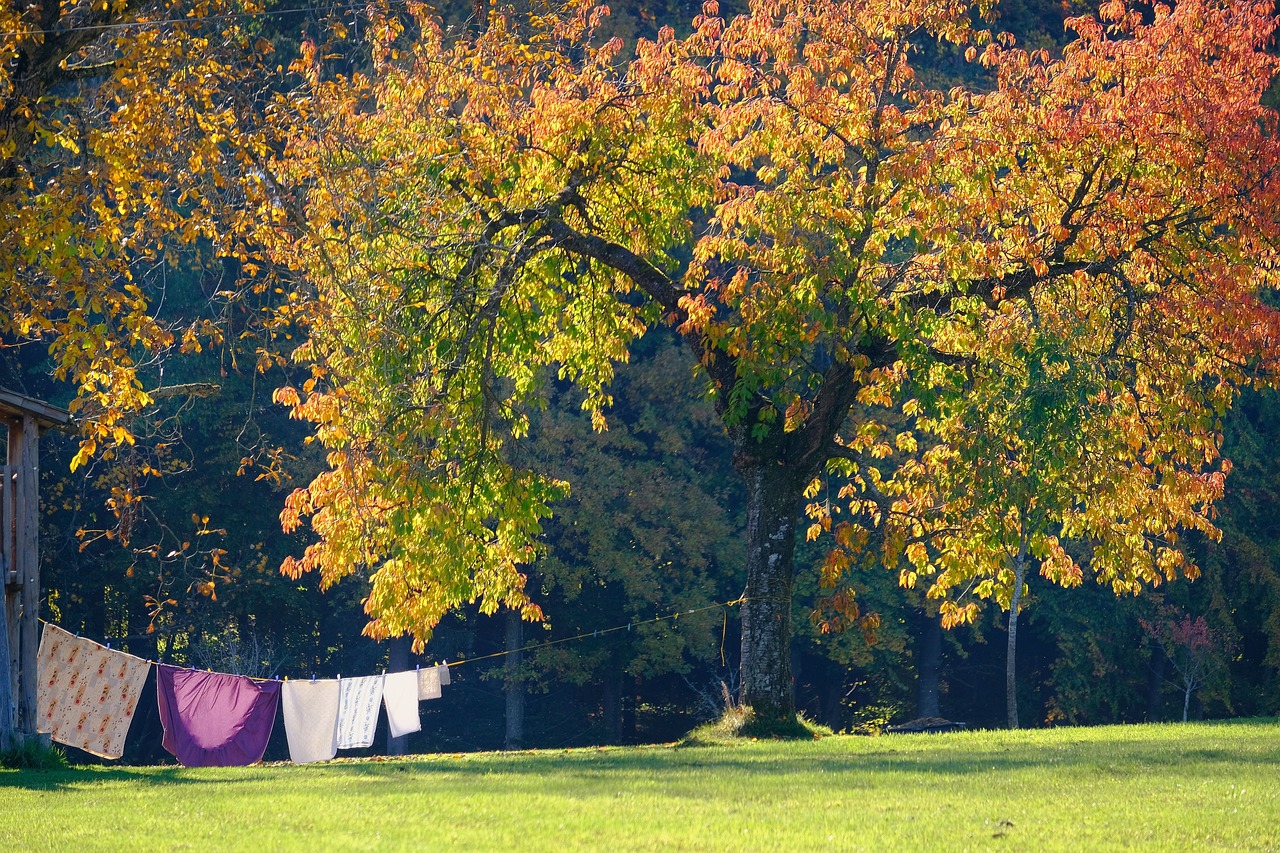
Types of Fencing Materials
When it comes to securing your backyard, choosing the right fencing material is crucial. Each material comes with its own set of advantages and disadvantages, influencing not just the security level but also the overall aesthetic of your outdoor space. Let's delve into some of the most popular options available, helping you make an informed decision that fits your needs and budget.
First up, we have wood fencing. This classic choice is beloved for its natural beauty and versatility. Wood fences can be customized in height and design, allowing you to create a unique look that complements your home. However, they do require regular maintenance, such as staining or painting, to protect against the elements. If you’re looking for a warm, inviting feel, wood may be the way to go, but be prepared to put in some work to keep it looking great.
Next, consider metal fencing, which includes options like wrought iron and aluminum. Metal fences are known for their durability and strength, making them a formidable barrier against intruders. They often come in intricate designs that can enhance the beauty of your yard while providing a high level of security. Although they may come with a higher initial cost, their longevity can make them a wise investment in the long run. Plus, they require less maintenance than wood.
If you're on a tighter budget, chain-link fencing is an economical choice that provides basic security. While it may not offer the same privacy as other materials, you can enhance its effectiveness by adding privacy slats or climbing plants. Chain-link is also easy to install and can be a good temporary solution while you figure out a more permanent option.
Lastly, there’s vinyl fencing, which is becoming increasingly popular due to its low maintenance and durability. Vinyl fences can mimic the appearance of wood without the upkeep, and they come in various styles and colors. However, they can be more expensive upfront compared to traditional wood or chain-link options. If you want a fence that looks great year-round without the hassle of painting or staining, vinyl is worth considering.
| Fencing Material | Pros | Cons |
|---|---|---|
| Wood | Natural beauty; customizable | Requires maintenance; susceptible to rot |
| Metal | Durable; strong security; aesthetic appeal | Higher cost; can rust if not treated |
| Chain-Link | Economical; easy to install | Limited privacy; less aesthetic appeal |
| Vinyl | Low maintenance; durable | Higher initial cost; limited color options |
In summary, the choice of fencing material can significantly impact your backyard's security and aesthetic. Whether you lean towards the warmth of wood, the strength of metal, the affordability of chain-link, or the low maintenance of vinyl, each option has its unique qualities. By understanding these materials and their characteristics, you can select the best fit for your home and lifestyle.
- What is the most secure fencing material? Metal fencing, especially wrought iron, is typically considered the most secure due to its strength and durability.
- How often should I maintain my wood fence? It's advisable to inspect and maintain your wood fence at least once a year, applying sealants or stains as needed.
- Can I install a fence myself? Yes, many homeowners choose to install their fences themselves, especially with chain-link or vinyl options, which are generally easier to handle.
- What is the lifespan of a vinyl fence? A well-maintained vinyl fence can last over 30 years, making it a long-term investment for your backyard.
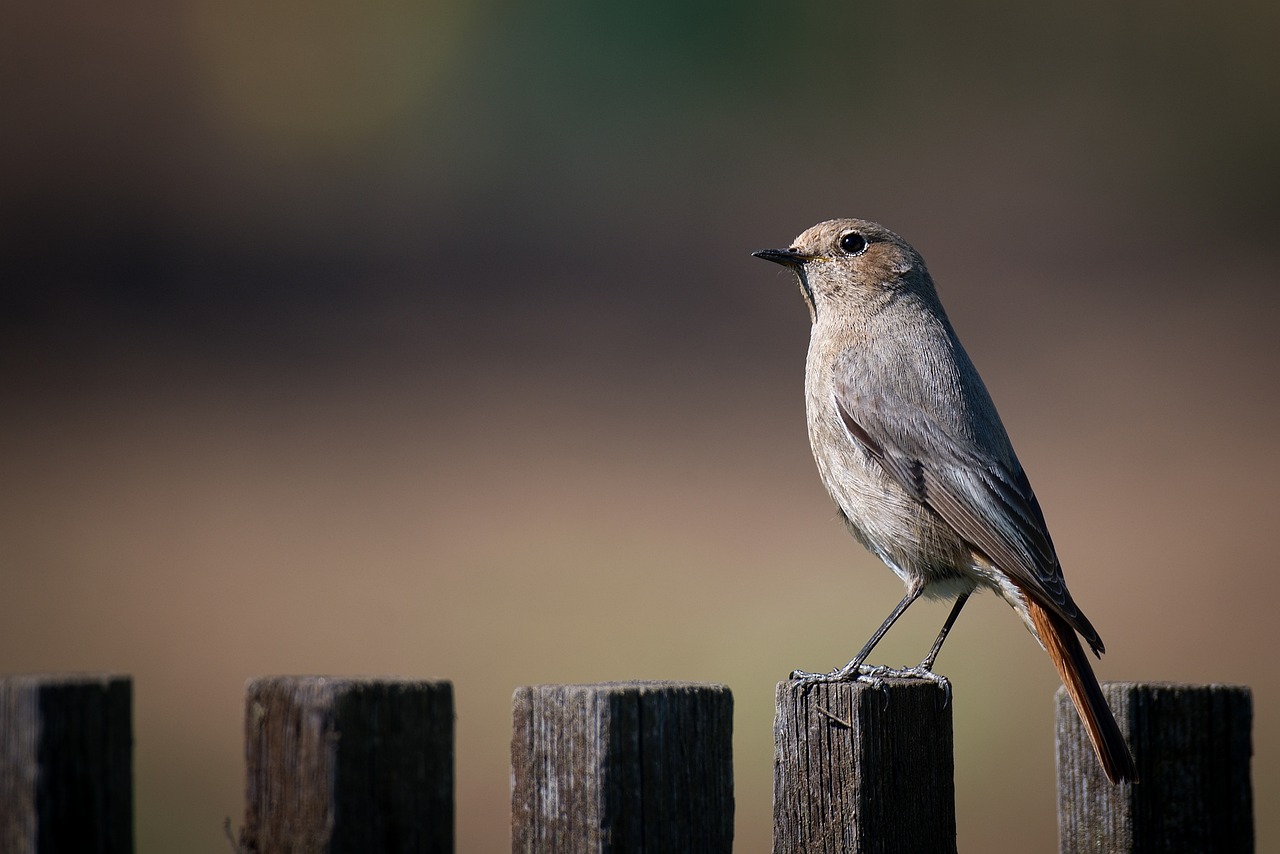
Wood Fencing
When it comes to backyard security, stands out as a popular choice for many homeowners. Not only does it provide a classic and natural aesthetic, but it also offers a level of privacy that is hard to beat. Imagine a beautifully crafted wooden fence surrounding your yard, giving you a sense of seclusion while simultaneously enhancing the overall look of your outdoor space. The versatility of wood allows you to customize the height and design, making it a fantastic option for anyone looking to create a secure yet inviting environment.
One of the key benefits of wood fencing is its ability to be tailored to fit your specific needs. Whether you prefer a tall, solid fence for maximum privacy or a picket-style fence that offers a more open feel, the options are nearly limitless. Furthermore, wood can be treated or painted in various colors, allowing you to match it perfectly with your home’s exterior. This customization not only enhances security but also boosts curb appeal, making your property more attractive to both visitors and potential buyers.
However, it’s essential to consider the type of wood you choose, as different varieties come with different levels of durability and maintenance requirements. For instance, cedar and redwood are known for their natural resistance to decay and insects, making them excellent choices for longevity. On the other hand, pressure-treated pine is a more budget-friendly option, but it may require more frequent maintenance to keep it looking its best. Here’s a quick comparison of popular wood types used in fencing:
| Wood Type | Durability | Maintenance | Cost |
|---|---|---|---|
| Cedar | High | Low | Moderate |
| Redwood | Very High | Low | High |
| Pressure-Treated Pine | Moderate | High | Low |
In addition to choosing the right wood, proper installation is crucial for ensuring your fence serves its security purpose effectively. A well-constructed wood fence should have sturdy posts set deep into the ground, with panels securely attached to prevent any gaps that intruders could exploit. Also, consider adding a top rail to strengthen the structure further and deter climbing. Regular inspections and maintenance, such as sealing or staining the wood, will help prolong the life of your fence and maintain its visual appeal.
Ultimately, wood fencing not only enhances the security of your backyard but also adds a touch of warmth and beauty to your property. With the right choice of materials and proper care, your wooden fence can be a long-lasting barrier that protects your home while creating an inviting outdoor space for your family and guests.
- How long does a wood fence typically last? A well-maintained wood fence can last anywhere from 15 to 30 years, depending on the type of wood and environmental conditions.
- What kind of maintenance does wood fencing require? Regular maintenance includes cleaning, staining, or sealing the wood to protect it from moisture and UV damage.
- Can I install a wood fence myself? Yes, many homeowners choose to install wood fencing themselves, but it’s important to follow proper guidelines to ensure stability and security.
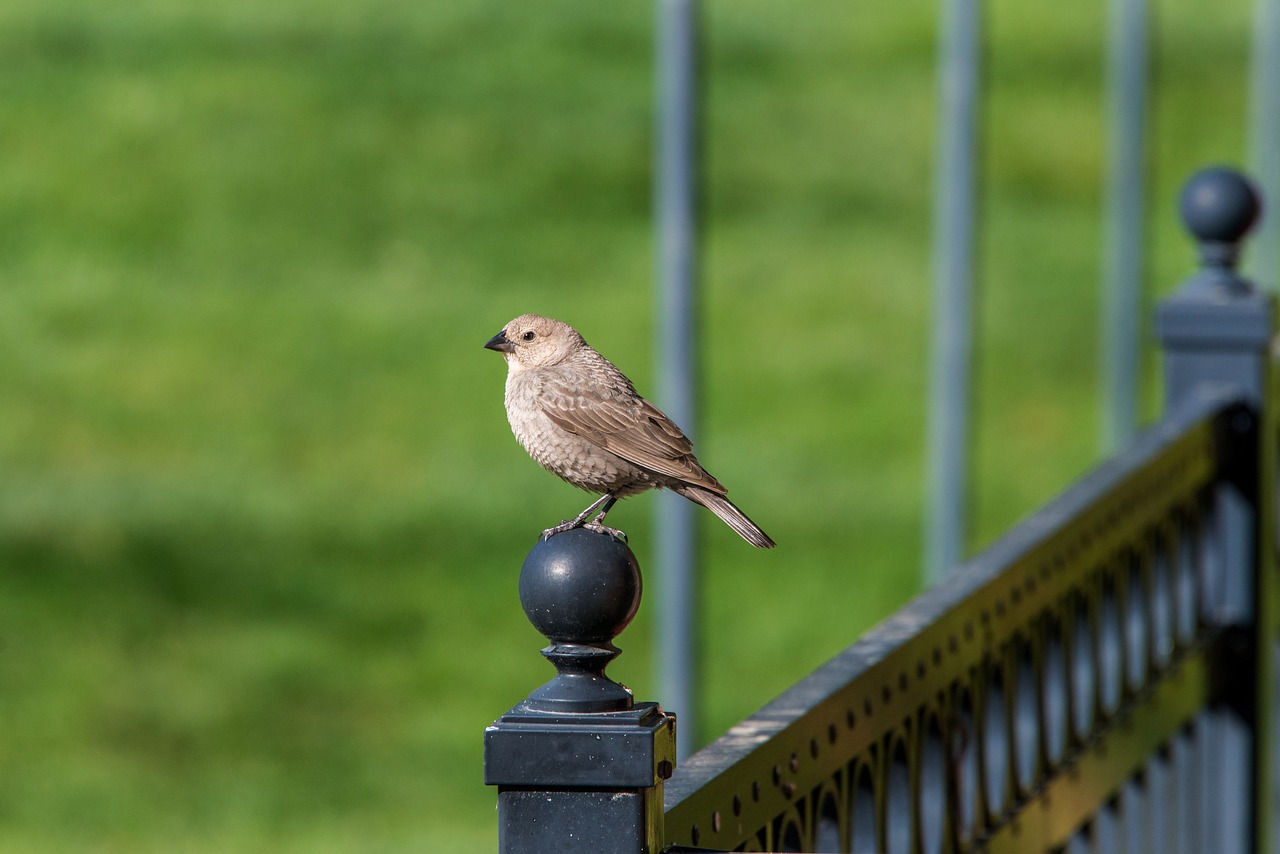
Metal Fencing
When it comes to securing your backyard, stands out as one of the most robust and enduring options. Not only does it provide a formidable barrier against intruders, but it also enhances the aesthetic appeal of your outdoor space. Imagine a fence that combines strength with elegance—metal fencing can do just that! With various styles available, you can choose a design that complements your home while ensuring safety.
There are a few popular types of metal fencing you might consider:
- Wrought Iron: Known for its classic look and exceptional strength, wrought iron fencing is highly customizable. You can opt for intricate designs or simple, sleek lines to match your taste.
- Aluminum: This lightweight yet durable option is resistant to rust and corrosion, making it perfect for various climates. Aluminum fencing often mimics the look of wrought iron but is usually more affordable.
- Chain-Link: While not as visually appealing as other metal options, chain-link fencing is incredibly cost-effective and provides a clear boundary. You can enhance its security by adding privacy slats.
One of the biggest advantages of metal fencing is its longevity. Unlike wood, which can warp or rot over time, metal fences can withstand harsh weather conditions, making them a wise investment for homeowners looking for long-term solutions. Additionally, many metal fences come with protective coatings that prevent rust and enhance their lifespan.
However, it's essential to consider a few factors before installing metal fencing. First, think about the height and design that best suit your needs. A taller fence may provide more privacy and security, while a decorative design can add charm to your backyard. Also, ensure that the fence is installed correctly to maximize its strength and stability.
In conclusion, metal fencing not only secures your backyard but also adds a touch of sophistication. Whether you choose wrought iron, aluminum, or chain-link, you can feel confident knowing that your property is well-protected. So, why not take the plunge and invest in a metal fence today? Your backyard will thank you!
1. How long does metal fencing last?
Most metal fences can last anywhere from 20 to 50 years, depending on the material and maintenance.
2. Is metal fencing more expensive than wood?
While the initial cost of metal fencing may be higher, its durability and low maintenance often make it more cost-effective in the long run.
3. Can I paint my metal fence?
Yes! You can paint your metal fence to match your home or garden. Just ensure you use a paint that is suitable for metal surfaces.
4. Do I need a permit to install metal fencing?
This varies by location. It's best to check with your local authorities to see if a permit is required.
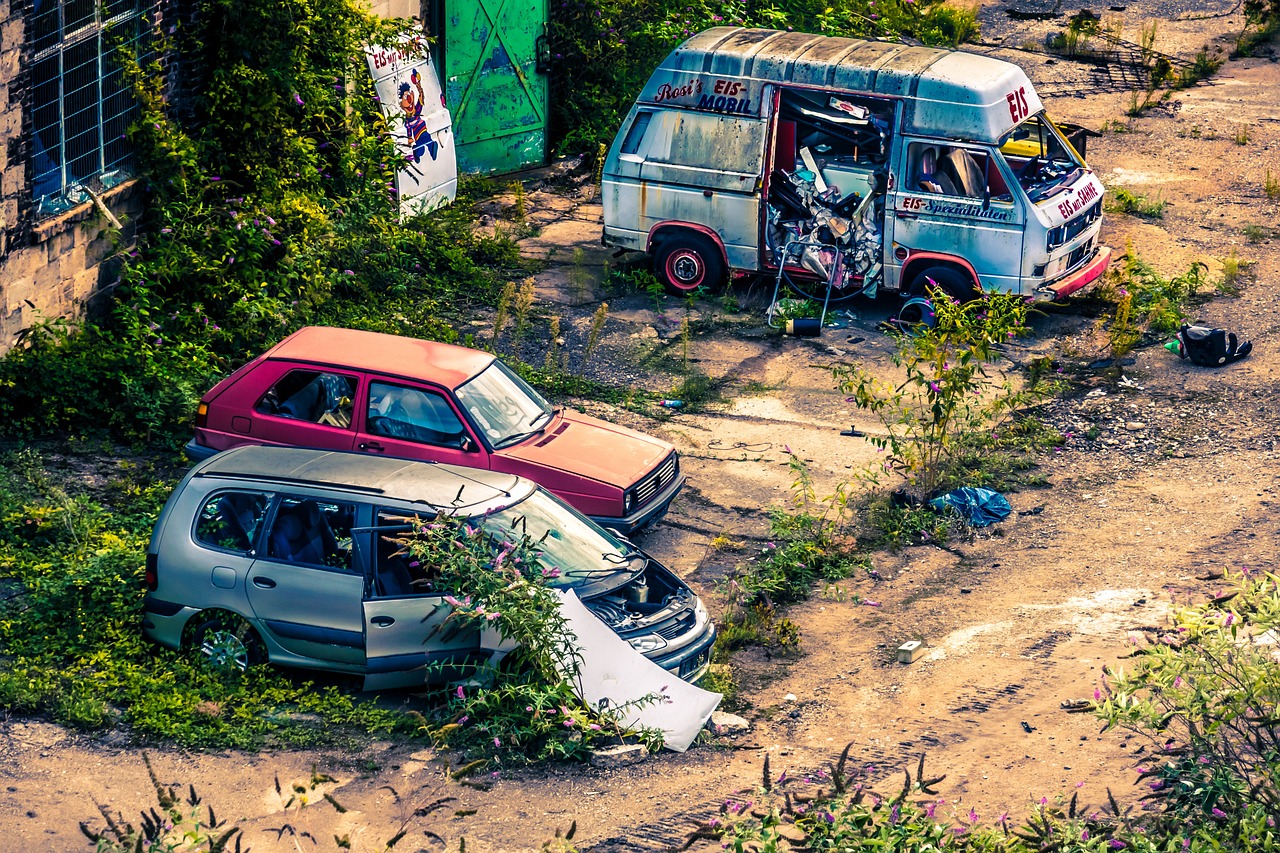
Design Considerations
When it comes to enhancing the security of your backyard, play a pivotal role. The right fence not only serves as a physical barrier but also contributes to the overall aesthetic of your outdoor space. Here are some key aspects to keep in mind:
Height is one of the most critical factors. A taller fence can effectively deter intruders, providing an additional layer of security. However, you don’t want it to feel like a fortress; a balance between security and openness is essential. Aim for a height that is sufficient to discourage unwanted visitors while still allowing you to enjoy your backyard view.
Visibility also matters significantly. A fence that is too solid can create blind spots, making it easier for intruders to approach unnoticed. Consider incorporating design elements that allow for visibility without sacrificing privacy. For example, a fence with lattice work or a combination of solid and open panels can provide both security and an inviting look.
Additionally, landscaping should complement your fence design. Well-placed shrubs or decorative plants can enhance the beauty of your yard while also acting as a natural deterrent to intruders. Just be cautious not to let your landscaping obstruct sightlines. Regular maintenance of these plants is essential to ensure they do not grow too tall and create hiding spots.
Another aspect to consider is the material of your fence. Different materials offer varying levels of security and aesthetics. For instance, while a wooden fence provides a warm, natural look, a metal fence can offer superior strength. When selecting materials, think about your neighborhood's style and your personal taste. A well-chosen fence should blend seamlessly with your home’s architecture.
In summary, the design of your backyard's security features should not be an afterthought. By considering height, visibility, landscaping, and material, you can create a secure yet inviting space. Remember, the goal is to make your backyard a sanctuary for your family while effectively deterring potential threats.
- What is the ideal height for a backyard fence?
The ideal height for a backyard fence typically ranges from 6 to 8 feet, depending on your local regulations and personal preference. - Can landscaping enhance security?
Yes, strategically placed shrubs and plants can serve as natural barriers and deter intruders while beautifying your space. - What materials are best for backyard fencing?
Wood, metal, and vinyl are popular choices, each offering different levels of security and aesthetic appeal. Choose based on your needs and budget. - How often should I maintain my fence?
Regular inspections and maintenance should be conducted at least once a year to ensure your fence remains effective and visually appealing.
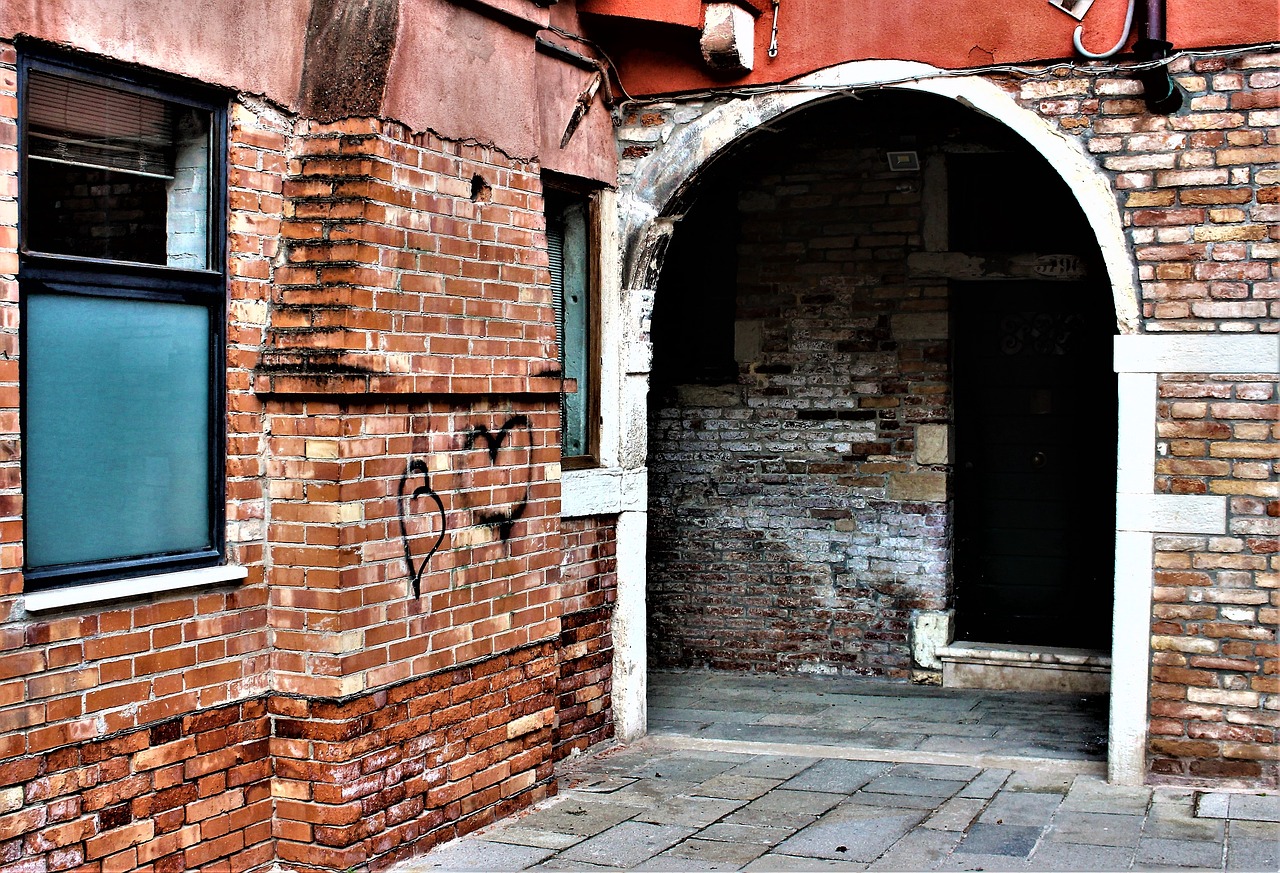
Enhancing Lighting Around Your Yard
When it comes to securing your backyard, one of the most effective yet often overlooked strategies is enhancing your outdoor lighting. Proper lighting not only illuminates dark corners but also creates an atmosphere of safety and vigilance. Imagine stepping outside at night, greeted by the warm glow of strategically placed lights that not only brighten your pathway but also deter any potential intruders. It’s like giving your backyard a protective cloak that keeps the darkness at bay.
Consider how a well-lit yard can transform your outdoor space. Not only does it improve visibility, but it also provides a sense of comfort for you and your family. Think about those late-night gatherings or evening strolls; wouldn't it be nice to enjoy them without the nagging worry of what might be lurking in the shadows? By investing in quality lighting solutions, you can create a welcoming environment while enhancing your security.
There are various types of lighting options available, but two standout choices are motion-sensor lights and solar-powered lights. Motion-sensor lights are particularly effective because they spring to life the moment they detect movement, flooding the area with light and alerting you to any unusual activity. This immediate illumination can scare off intruders and give you peace of mind. On the other hand, solar-powered lights are an eco-friendly option that requires minimal installation effort. They harness the sun’s energy during the day and provide illumination at night, making them perfect for highlighting pathways and dark corners.
To give you a clearer picture, here’s a quick comparison of these two lighting solutions:
| Feature | Motion-Sensor Lights | Solar-Powered Lights |
|---|---|---|
| Energy Source | Electricity | Solar Energy |
| Installation | Requires wiring | Easy installation, no wiring needed |
| Activation | Triggered by movement | Automatic at dusk |
| Cost | Higher initial cost | Lower initial cost, long-term savings |
When planning your lighting layout, think about the areas that need the most illumination. Focus on entry points like gates and doors, as well as pathways that lead to your home. Additionally, consider placing lights near windows or any areas that could provide easy access for intruders. This not only enhances your security but also makes your backyard a more enjoyable space for nighttime activities.
Incorporating lighting into your landscaping can also be a game-changer. Use uplights to highlight trees or shrubs, creating beautiful shadows that add depth to your yard while keeping it secure. It’s like turning your backyard into a stunning gallery that also serves a purpose. The right lighting can transform your outdoor space from a dark, foreboding area into a vibrant, safe haven.
In conclusion, enhancing the lighting around your yard is a simple yet powerful way to boost your backyard security. By choosing the right lighting solutions and strategically placing them, you can create a well-lit environment that deters intruders and provides peace of mind for you and your family. Don’t underestimate the power of light; it’s one of your best allies in the quest for a secure outdoor space.
- What type of lighting is best for security? Motion-sensor lights are highly effective as they activate with movement, while solar-powered lights are great for energy efficiency and ease of installation.
- How can I enhance the visibility in my backyard? Focus on illuminating pathways, entry points, and dark corners with a combination of different lighting types.
- Are solar-powered lights reliable? Yes, solar-powered lights are reliable, especially in areas with ample sunlight during the day, as they charge and provide illumination at night.
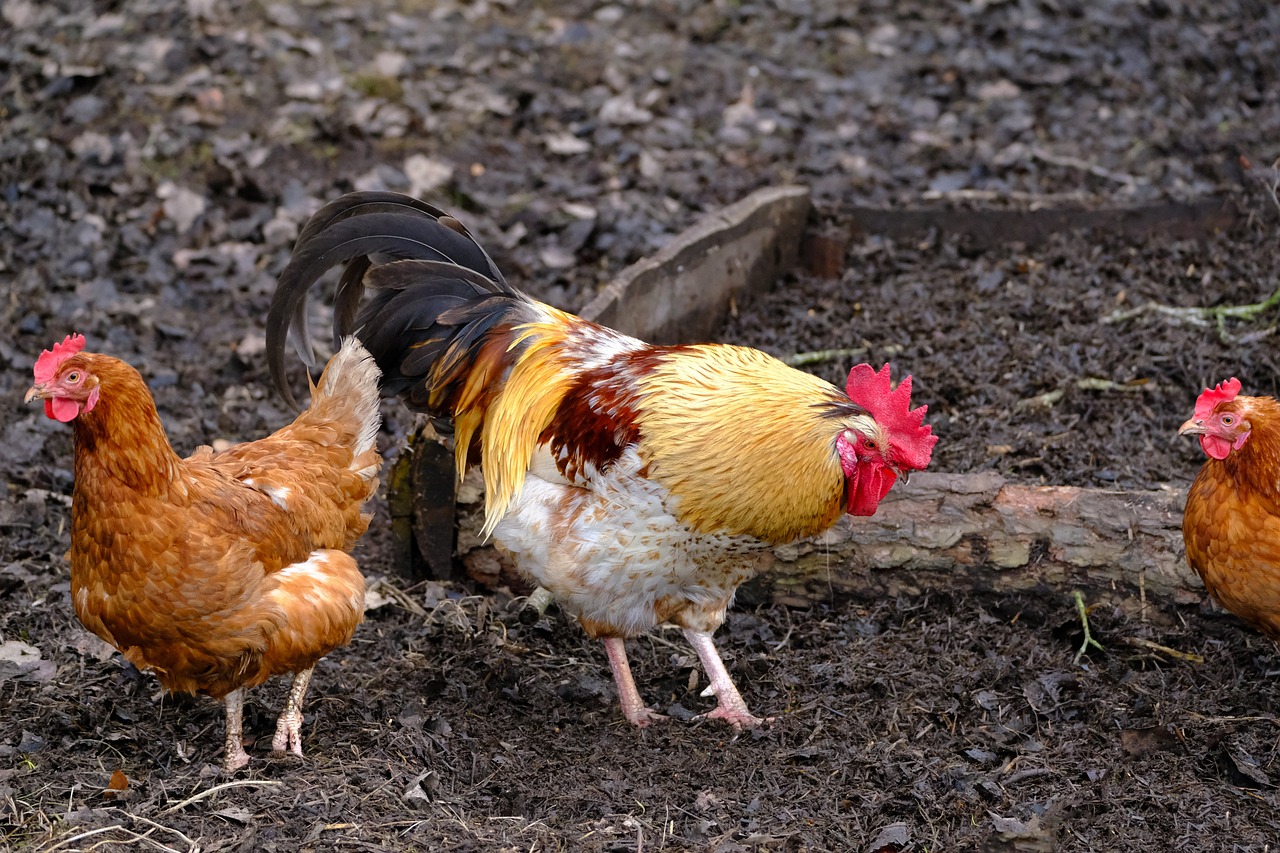
Motion-Sensor Lights
When it comes to enhancing the security of your backyard, are a game changer. These lights are designed to automatically turn on when they detect movement, providing immediate illumination and creating a sense of safety. Imagine stepping into your yard at night and suddenly being greeted by a warm glow that chases away the shadows. This not only helps you navigate your space but also serves as a powerful deterrent for potential intruders who prefer to operate under the cover of darkness.
One of the best aspects of motion-sensor lights is their energy efficiency. Unlike traditional outdoor lighting that stays on all night, these lights only activate when needed, which can lead to significant savings on your electricity bill. Furthermore, they come in a variety of styles and designs, allowing you to choose options that blend seamlessly with your backyard aesthetics. Whether you prefer sleek modern fixtures or classic lantern styles, there’s a motion-sensor light that will fit your taste.
When selecting motion-sensor lights, consider the following features to maximize their effectiveness:
- Detection Range: Look for lights with a wide detection range to cover larger areas of your yard.
- Adjustable Sensitivity: Some models allow you to adjust the sensitivity of the motion sensor, preventing false alarms from pets or passing cars.
- Light Duration: Choose lights that let you set how long they stay on after being triggered, allowing for customization based on your needs.
Installing motion-sensor lights in strategic locations can significantly enhance your backyard security. Consider placing them near entry points, such as gates and doors, or in areas that are typically dark and secluded. This not only illuminates potential hiding spots for intruders but also provides you with peace of mind when you’re outside at night.
In summary, incorporating motion-sensor lights into your backyard security plan is an effective and practical measure. They not only improve safety and visibility but also add a layer of sophistication to your outdoor space. With various styles and features available, you can find the perfect lights to suit your needs while keeping your family and property safe.
1. How do motion-sensor lights work?
Motion-sensor lights use infrared sensors to detect movement. When a warm body, such as a person or animal, passes within the sensor's range, it triggers the light to turn on.
2. Can I adjust the sensitivity of my motion-sensor lights?
Yes, many motion-sensor lights come with adjustable sensitivity settings, allowing you to control how easily they are triggered. This feature helps reduce false alarms.
3. Are motion-sensor lights energy-efficient?
Absolutely! Since they only activate when motion is detected, they consume less energy compared to traditional outdoor lights that remain on continuously.
4. Where should I install motion-sensor lights?
It's best to install them near entry points, such as doors and gates, as well as in dark corners of your yard to illuminate potential hiding spots for intruders.
5. Do motion-sensor lights require special installation?
Most motion-sensor lights are designed for easy installation and can often be mounted using standard tools. However, some models may require professional installation, especially if they are hardwired.
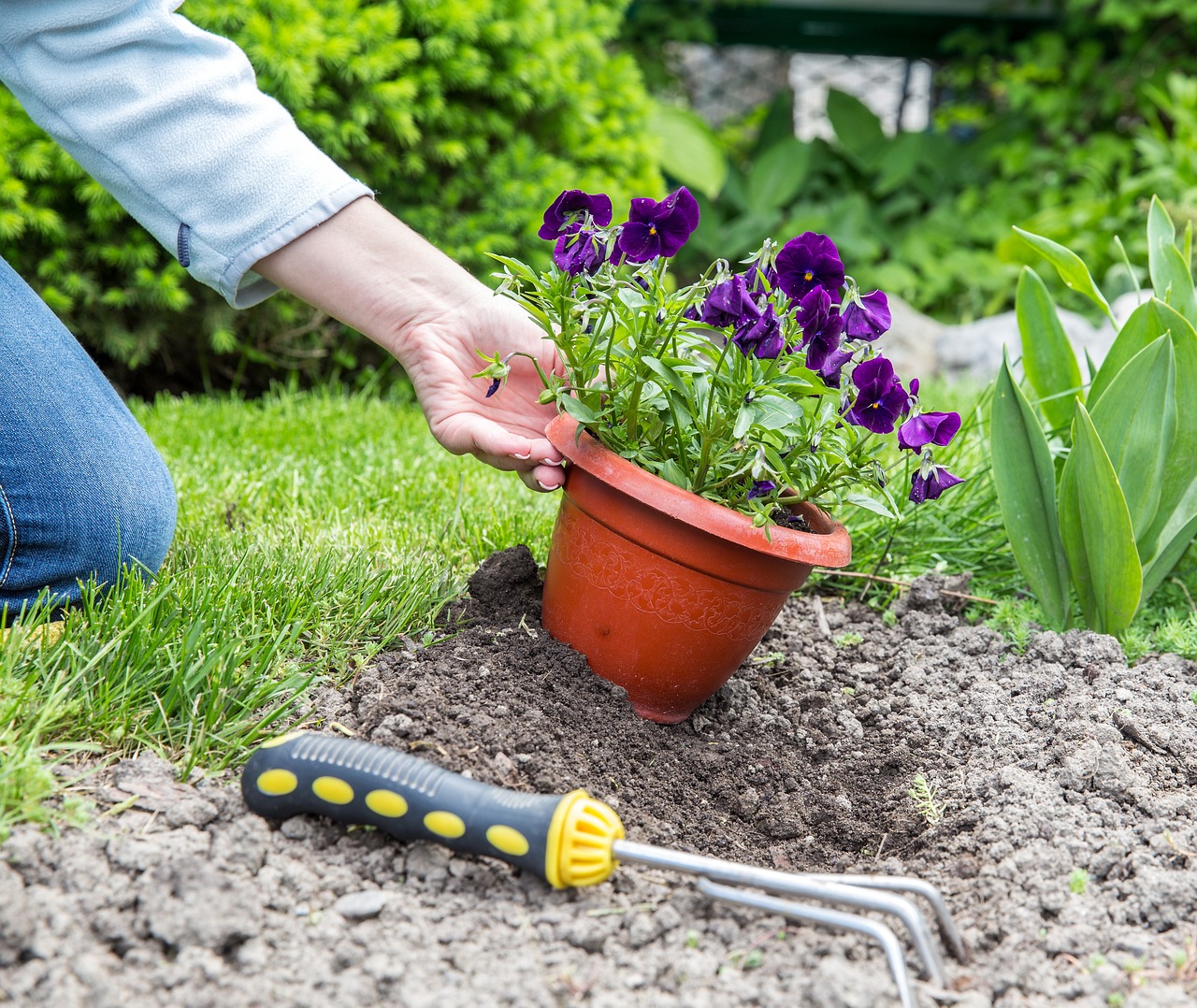
Solar-Powered Options
This article explores various strategies to enhance the security of your backyard, ensuring safety for your family and property. Discover practical tips, innovative technologies, and essential measures to create a secure outdoor environment.
Before implementing changes, evaluate your existing security measures. Identifying vulnerabilities in your backyard will help you prioritize improvements and create a more secure space for your loved ones.
A sturdy fence is a fundamental aspect of backyard security. Explore different materials and designs to find the right fence that provides privacy while deterring intruders effectively.
Different materials offer varying levels of security and aesthetics. Consider wood, vinyl, metal, and chain-link options to determine which best suits your needs and budget.
Wood fences provide a classic look and can be customized for height and design, making them a popular choice for privacy and security.
Metal fencing, such as wrought iron or aluminum, offers durability and strength, making it a formidable barrier against intruders.
When choosing a fence, consider height, visibility, and landscaping. A well-designed fence can enhance security while complementing your backyard's aesthetic.
Proper lighting can deter potential intruders. Strategically placed lights improve visibility and create a sense of safety in your backyard during the night.
Motion-sensor lights activate when movement is detected, providing immediate illumination and alerting you to any unusual activity in your backyard.
Solar-powered lights are not just a trendy choice; they are a game changer for backyard security! These lights harness the power of the sun, making them energy-efficient and cost-effective in the long run. Imagine walking through your backyard at night, and as you step into a dark area, the lights spring to life, illuminating your path. This not only enhances visibility but also deters any would-be intruders who might be lurking in the shadows.
Installing solar-powered lights is a breeze. They typically come with easy-to-follow installation instructions, and since they rely on sunlight, you don’t have to worry about wiring or electrical outlets. Just place them in a sunny spot during the day, and they’ll automatically light up at night. Here are some popular locations to install solar lights:
- Pathways: To guide your way and prevent trips and falls.
- Near entry points: Such as doors and gates to enhance visibility.
- Patio areas: To create a cozy ambiance while boosting security.
Moreover, many solar lights are equipped with motion sensors, meaning they only turn on when someone approaches. This feature not only saves energy but also adds an extra layer of security, alerting you to any movement in your yard. With advancements in technology, some solar lights even come with smart features, allowing you to control them via your smartphone!
In summary, solar-powered lighting is an excellent investment for enhancing your backyard security. They are eco-friendly, easy to install, and provide both safety and aesthetic appeal. So why not brighten your outdoor space while keeping your home secure?
Installing security cameras can provide peace of mind and help monitor your backyard. Learn about different camera types and placement strategies for optimal coverage.
Explore options like wired, wireless, and smart cameras to find the best fit for your security needs and budget.
Smart cameras offer advanced features like motion detection, alerts, and remote access, allowing you to monitor your yard from anywhere.
Utilizing landscaping to create natural barriers can enhance security. Strategically placed shrubs, trees, and thorny plants can deter intruders while beautifying your backyard.
Select dense, thorny, or prickly plants to create an effective natural barrier that adds both beauty and security to your outdoor space.
Ensure that landscaping does not obstruct visibility. Regular maintenance helps keep your backyard secure while allowing you to spot potential threats easily.
Building relationships with neighbors can foster a sense of community and enhance security. Neighbors can look out for each other, sharing information about suspicious activities.
Participating in or starting a neighborhood watch program can strengthen community ties and improve overall safety in your area.
Utilizing group messaging apps or social media can help neighbors stay informed about local security issues and coordinate efforts to keep each other safe.
Consistent maintenance of your security measures is crucial. Regularly assess and update your backyard security to adapt to changing circumstances and ensure ongoing protection.
Routine inspections of fences and lighting can help identify issues early, ensuring that your security measures remain effective.
Stay informed about the latest security technologies and consider upgrading your systems to enhance your backyard's safety.
Having a plan in place for emergencies can ensure your family's safety. Learn how to create an effective emergency plan tailored to your backyard security needs.
Assemble an emergency kit with essential supplies, including first aid items, flashlights, and communication tools, to be prepared for any situation.
Designate a meeting point and establish communication protocols for your family to follow in case of an emergency or security breach.
Q: How can I make my backyard more secure without spending a lot of money?
A: Start by assessing your current security measures and making simple upgrades like adding solar-powered lights and maintaining your landscaping. You can also engage with neighbors to create a community watch program.
Q: Are solar-powered lights effective in all weather conditions?
A: Yes, most solar-powered lights are designed to withstand various weather conditions. However, their performance may vary based on the amount of sunlight they receive, so it's essential to place them in well-lit areas during the day.
Q: What should I do if I notice suspicious activity in my backyard?
A: If you see something unusual, it's best to stay calm. Make sure to document what you see, and if you feel threatened, contact local authorities immediately.
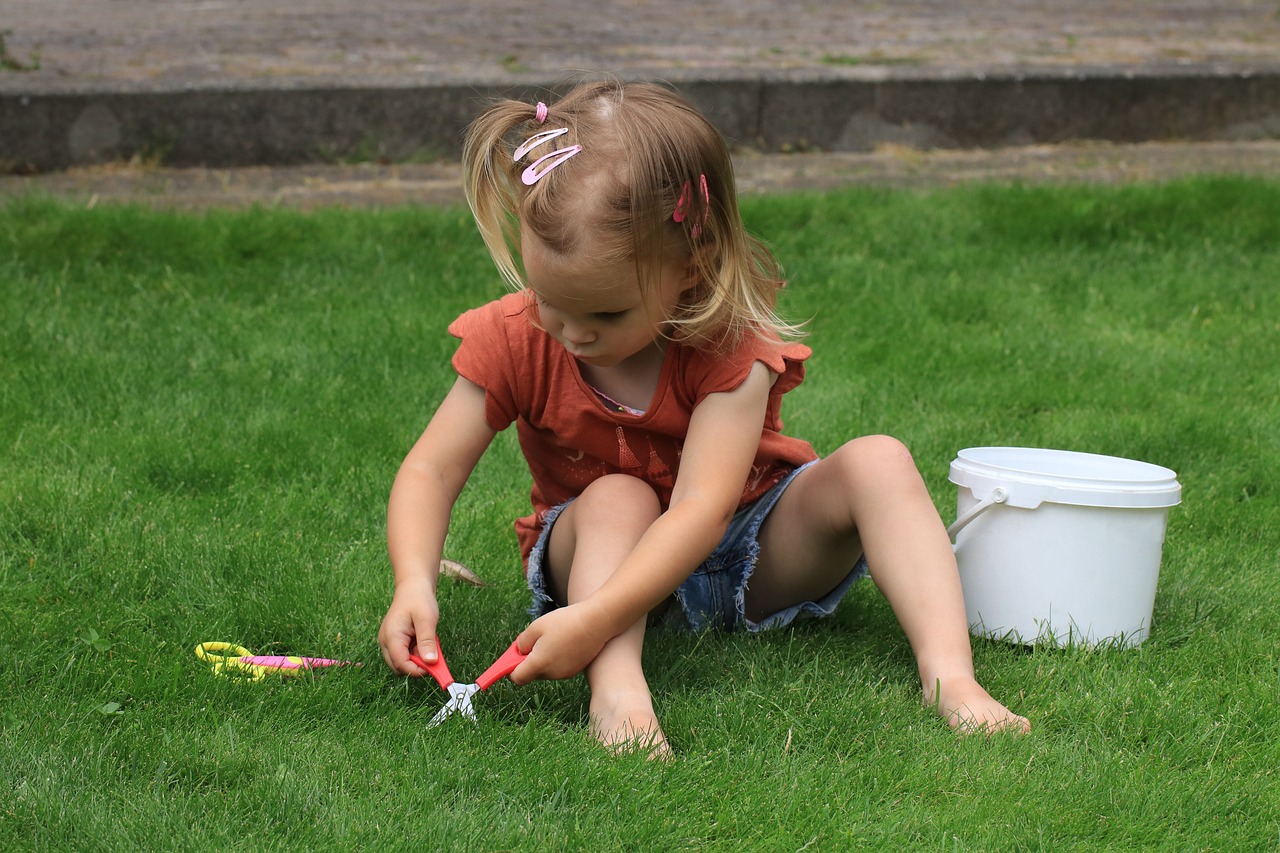
Utilizing Security Cameras
When it comes to securing your backyard, installing security cameras can be a game-changer. Not only do they provide a sense of safety, but they also serve as a deterrent for potential intruders. Imagine having a set of vigilant eyes watching over your property, even when you’re not around. It's like having a digital watchdog that never sleeps! With advancements in technology, there are various types of cameras available, each designed to meet different needs and budgets.
One of the first things to consider when choosing a security camera is whether you prefer wired or wireless options. Wired cameras tend to offer more stable connections and can be more reliable in terms of video quality. However, they require more installation work, which can sometimes be a hassle. On the other hand, wireless cameras are easier to install and can be placed in hard-to-reach areas, but they rely on Wi-Fi connectivity, which can be a drawback if your signal is weak. Additionally, smart cameras have gained popularity due to their advanced features that allow you to monitor your property remotely.
Here’s a quick comparison of the different types of security cameras:
| Camera Type | Pros | Cons |
|---|---|---|
| Wired Cameras | Stable connection, better video quality | Complex installation, limited placement options |
| Wireless Cameras | Easy installation, flexible placement | Dependent on Wi-Fi, potential signal issues |
| Smart Cameras | Remote access, motion alerts, cloud storage | Higher cost, requires internet connection |
Once you’ve decided on the type of camera, the next step is placement. It's crucial to position your cameras effectively to maximize coverage. Ideally, cameras should be placed at entry points such as gates, doors, and windows, as well as in areas that are less visible to outsiders. Think of it like setting up a perimeter defense for your backyard. The more angles you can cover, the better your chances of capturing any suspicious activity.
Smart cameras come with features that enhance their functionality. For instance, many models offer motion detection capabilities, which can send alerts to your phone when movement is detected. This feature is particularly useful for monitoring your backyard in real-time. Some cameras even allow you to communicate through them, so you can speak to visitors or intruders directly, which can be a great way to scare off unwanted guests. Furthermore, with cloud storage options, you can save footage for later review, providing valuable evidence if ever needed.
In conclusion, utilizing security cameras is an effective way to bolster your backyard security. They not only provide peace of mind but also serve as a proactive measure to deter potential threats. By carefully selecting the right type of camera and placing them strategically, you can create a safer environment for your family and property.
- What is the best type of security camera for my backyard? The best type depends on your specific needs. Wired cameras offer stability, while wireless cameras provide flexibility. Smart cameras add advanced features like remote access.
- How many cameras do I need for adequate coverage? It varies based on the size of your backyard and the number of entry points. Aim to cover all vulnerable areas, such as gates and windows.
- Do I need a professional to install security cameras? While some people may choose to install them themselves, hiring a professional can ensure that the cameras are positioned correctly and function optimally.
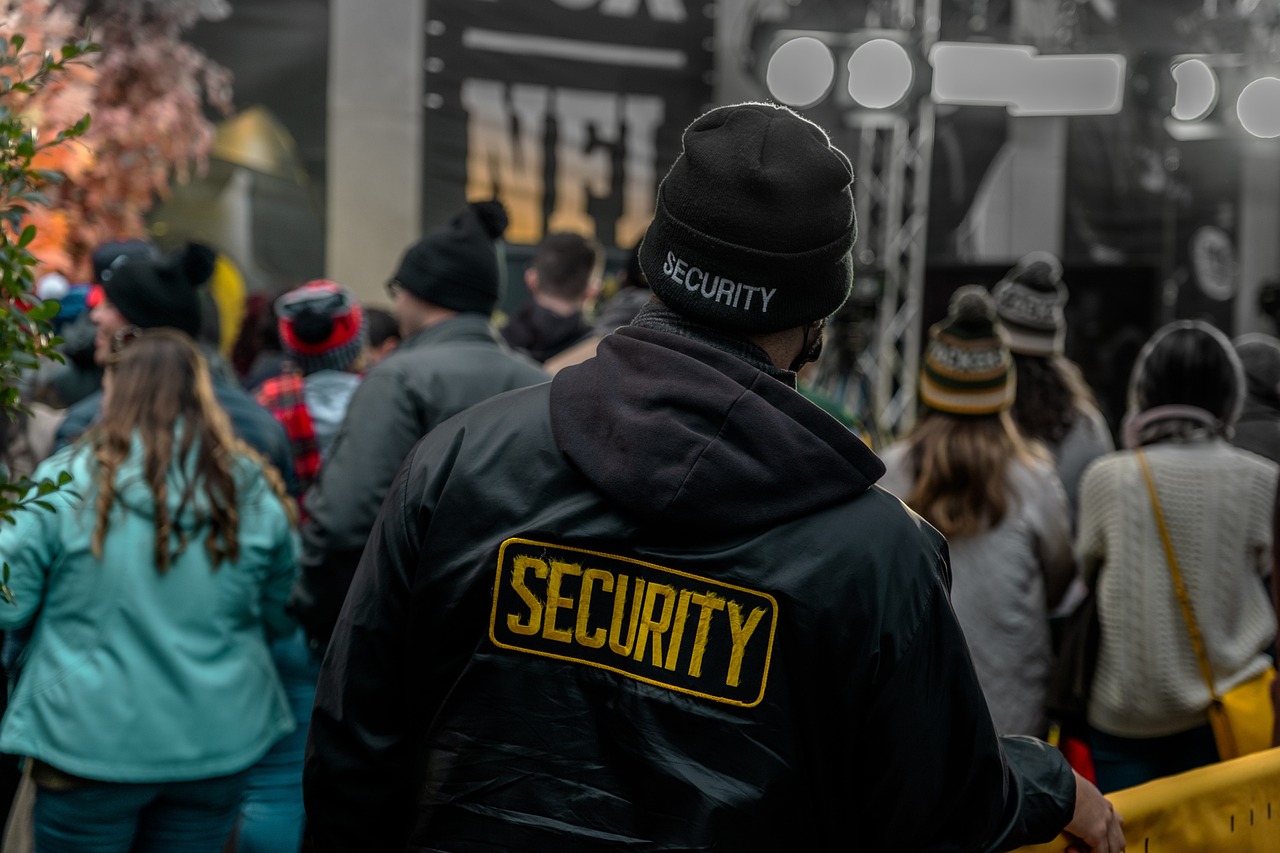
Types of Security Cameras
When it comes to securing your backyard, choosing the right type of security camera is crucial. With a plethora of options available, it can be overwhelming to decide which one suits your needs best. Generally, security cameras fall into three main categories: wired, wireless, and smart cameras. Each type has its unique features and benefits, making it essential to understand their differences before making a decision.
Wired cameras are typically more reliable in terms of connectivity since they are hardwired to your home’s power and internet systems. This means you won’t have to worry about battery life or weak signals. However, installation can be more labor-intensive and may require professional help, especially if you need to run cables through walls or ceilings. On the other hand, wired cameras can offer higher video quality and are less susceptible to interference.
Wireless cameras provide a level of flexibility that wired options often can’t match. They can be placed almost anywhere, making them ideal for hard-to-reach areas in your backyard. However, they rely on Wi-Fi connectivity, which can sometimes lead to issues with signal strength, especially if you have a large property or thick walls. It's essential to ensure that your Wi-Fi network is robust enough to support multiple devices if you choose this option.
Finally, we have the innovative smart cameras. These are the latest trend in home security, offering advanced features such as motion detection, remote monitoring via smartphone apps, and even facial recognition. Smart cameras can send alerts to your phone if they detect any unusual activity, allowing you to respond quickly. They often integrate seamlessly with other smart home devices, enhancing your overall security system.
To help you visualize the differences, here’s a quick comparison table:
| Camera Type | Advantages | Disadvantages |
|---|---|---|
| Wired | Reliable connection, higher video quality | Complex installation, less flexible placement |
| Wireless | Flexible placement, easy installation | Dependent on Wi-Fi, potential signal issues |
| Smart | Advanced features, remote access | Can be expensive, requires stable internet |
Ultimately, the best type of security camera for your backyard will depend on your specific needs, budget, and preferences. Take the time to assess your property and determine which features are most important to you. By investing in the right camera system, you can significantly enhance your backyard security and enjoy peace of mind knowing that your family and property are well-protected.
Q: What is the best type of security camera for outdoor use?
A: The best type of camera depends on your specific needs, but generally, wired cameras offer reliability, while wireless cameras provide flexibility. Smart cameras are great for advanced features.
Q: How can I ensure my wireless camera has a strong signal?
A: To ensure a strong signal, place the camera within range of your Wi-Fi router, consider using Wi-Fi extenders, and avoid placing it behind thick walls or obstacles.
Q: Are smart cameras worth the investment?
A: Yes, smart cameras offer advanced features like motion alerts and remote access, which can enhance your security and provide peace of mind.

Smart Camera Features
When it comes to enhancing your backyard security, smart cameras are a game changer. These high-tech devices do more than just record; they offer a suite of features that can significantly bolster your home’s safety. Imagine being able to monitor your yard from anywhere in the world, all from the convenience of your smartphone! With smart cameras, this is not just a dream; it’s a reality.
One of the standout features of smart cameras is motion detection. This technology allows the camera to sense movement within its field of view and trigger alerts to your device. Whether it’s a stray cat or an unexpected visitor, you’ll be notified instantly. This means you can take immediate action or simply keep an eye on what’s happening in your yard. Some advanced models even allow you to customize the sensitivity of the motion detection, so you can avoid unnecessary alerts from passing cars or rustling leaves.
Another remarkable aspect of smart cameras is their remote access capabilities. Most smart cameras come with an accompanying app that lets you view live footage from your camera at any time. This means that whether you’re at work, on vacation, or just lounging on the couch, you can check in on your backyard. Some systems even allow for two-way audio, enabling you to communicate with anyone in your yard through the camera. Imagine being able to say hello to a delivery person without having to step outside!
Additionally, many smart cameras come equipped with night vision. This feature is crucial for nighttime security, as it allows the camera to capture clear images even in low-light conditions. Some models utilize infrared technology, which can illuminate your yard without being visible to the naked eye, ensuring that intruders are unaware they’re being monitored. This can be a significant deterrent against potential threats.
Moreover, smart cameras often integrate with other home security systems, creating a comprehensive security network. For instance, they can work alongside motion sensors, alarms, and even smart locks. This integration allows for a more cohesive security experience; if a camera detects movement, it can trigger other devices to respond accordingly, such as turning on lights or sounding an alarm. This interconnectedness is what makes smart cameras a pivotal part of modern home security.
To summarize, the features of smart cameras not only provide peace of mind but also empower you to take control of your backyard security. They offer:
- Motion Detection: Instant alerts for any movement.
- Remote Access: Live streaming from anywhere.
- Night Vision: Clear visibility in low-light conditions.
- Integration: Works seamlessly with other security devices.
With all these features at your disposal, investing in a smart camera system is a step toward a safer home and a more secure backyard. So why wait? Start exploring the options available and find the perfect smart camera that meets your needs!
1. What is the difference between wired and wireless smart cameras?
Wired cameras connect directly to your home’s power supply and network, offering stable connections but requiring more installation work. Wireless cameras operate on batteries or Wi-Fi, making them easier to install but potentially less reliable if the battery runs low or Wi-Fi is disrupted.
2. Can I view my smart camera footage on multiple devices?
Yes, most smart camera systems allow you to access footage from multiple devices, including smartphones, tablets, and computers. Just ensure you have the appropriate app installed and your login credentials handy.
3. Are smart cameras effective in deterring crime?
Absolutely! The mere presence of a camera can deter potential intruders. When they see a camera, they’re more likely to think twice before attempting to trespass.
4. Do smart cameras require a subscription for cloud storage?
Many smart cameras offer free cloud storage options, but some may require a subscription for extended storage or advanced features. Always check the terms before purchasing.
5. How do I maintain my smart camera?
Regularly check for software updates, clean the camera lens, and ensure the camera is positioned correctly for optimal viewing. This maintenance will help keep your system functioning effectively.
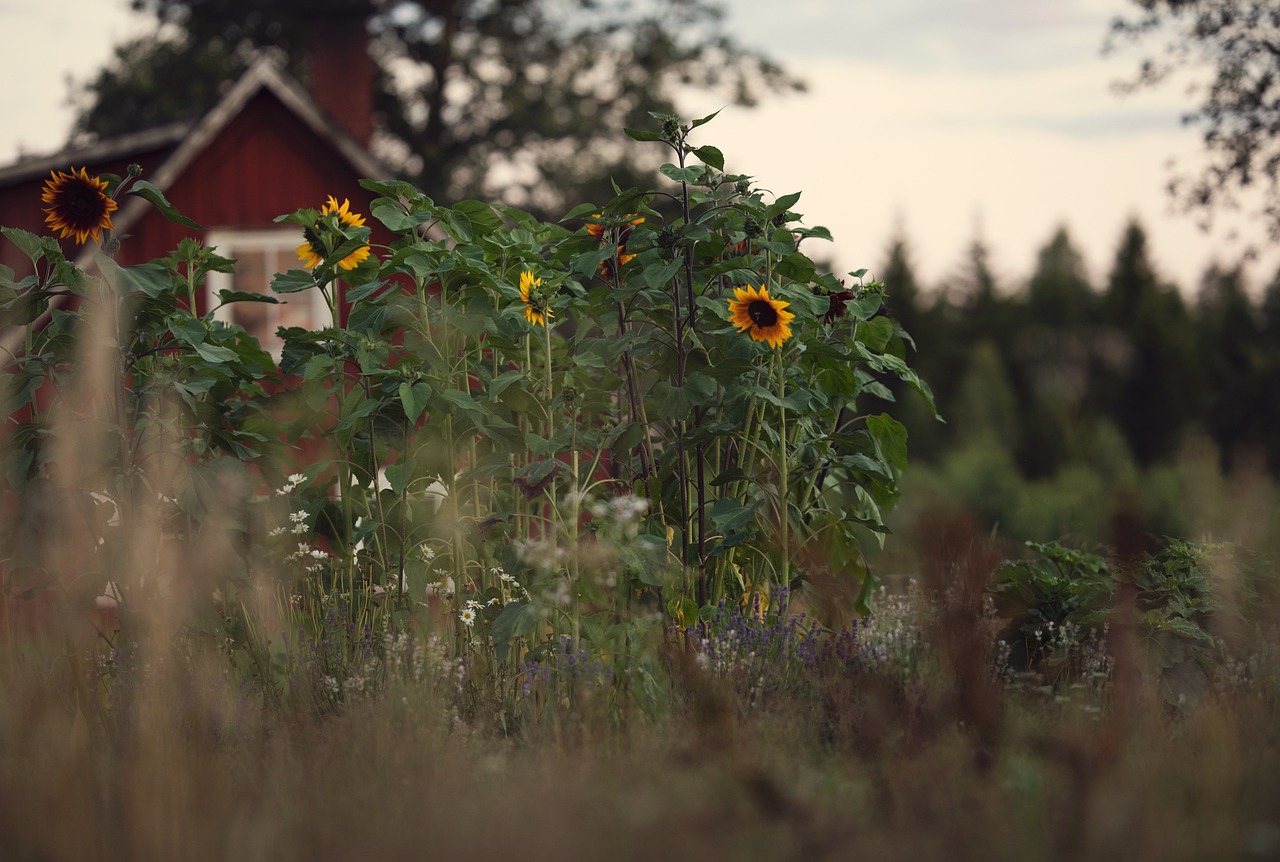
Creating Natural Barriers
Utilizing landscaping to create natural barriers is a brilliant way to enhance the security of your backyard while also adding beauty to your outdoor space. Think of your yard as a canvas where you can paint a picture of both safety and aesthetics. By strategically placing shrubs, trees, and even thorny plants, you can craft a stunning yet protective environment that deters intruders without the need for harsh fences or walls.
When choosing the right plants, consider those that not only look good but also serve a purpose. Dense foliage can make it difficult for someone to see into your yard, while thorny plants can act as a natural deterrent. Imagine walking through a garden filled with vibrant colors and textures, where the beauty of your surroundings also provides you with peace of mind. Some excellent options for creating these natural barriers include:
- Holly bushes: Their prickly leaves can deter intruders while adding an attractive green element to your yard.
- Roses: Not just beautiful, rose bushes can be armed with thorns that serve as an effective barrier.
- Barberry shrubs: These are not only visually appealing but also have sharp thorns that can discourage unwanted guests.
However, while you’re enhancing your backyard with these natural barriers, it’s crucial to maintain visibility. You don’t want to create a fortress that hides potential threats. Regular maintenance is key here; trimming overgrown plants and ensuring that your landscaping doesn’t obscure sightlines can help you spot any suspicious activity. Think of it as keeping your backyard both beautiful and functional, allowing you to enjoy the serenity of nature while staying alert.
Additionally, consider the layout of your plants. Placing taller shrubs at the back and shorter ones in the front can create a layered effect that not only looks stunning but also provides a sense of depth. This design strategy can enhance your yard's visual appeal while simultaneously fortifying its security. Remember, a well-planned garden is like a well-structured defense system—both can work harmoniously to protect what you cherish the most.
In summary, creating natural barriers in your backyard is a fantastic way to boost security without sacrificing style. By choosing the right plants and maintaining visibility, you can cultivate a space that is both inviting and secure. So, get your hands dirty and start planting; your backyard will thank you for it!
Q: What are some effective plants for creating natural barriers?
A: Some effective plants include holly bushes, rose bushes, and barberry shrubs. These plants not only provide beauty but also serve as deterrents due to their thorns.
Q: How can I maintain visibility while using natural barriers?
A: Regular maintenance, such as trimming overgrown plants and strategically placing them, can help maintain visibility while ensuring security.
Q: Can I combine natural barriers with other security measures?
A: Absolutely! Natural barriers can complement other security measures like fences and lighting to create a comprehensive security system for your backyard.
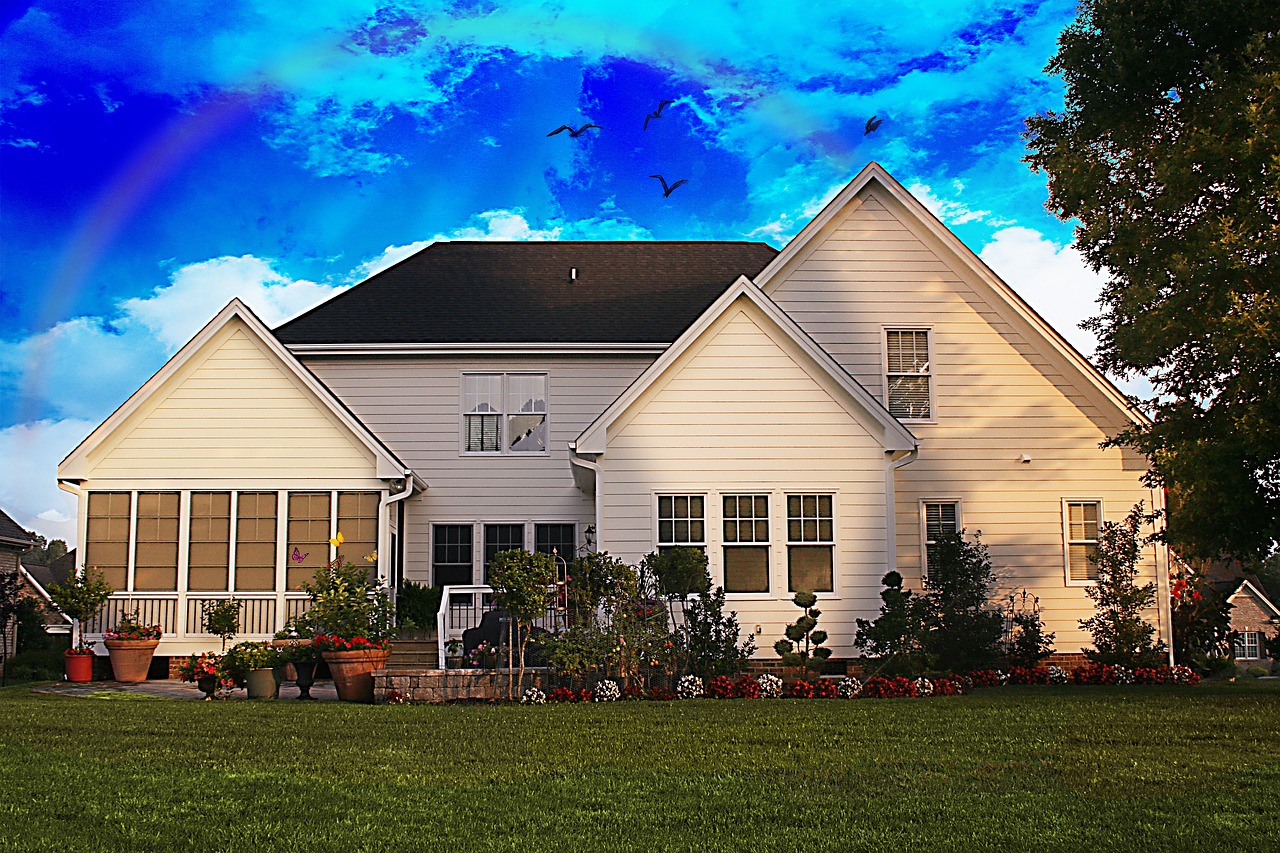
Choosing the Right Plants
When it comes to securing your backyard, the right plants can serve as both a beautiful addition to your landscape and a formidable barrier against unwanted intruders. Imagine your yard transformed not just into a stunning oasis but also a protective fortress! Selecting the right plants is crucial, as some species can deter potential trespassers while enhancing the aesthetic appeal of your outdoor space. So, what should you look for in a plant when aiming for security?
First and foremost, consider plants that are dense and thorny. These types of plants create a natural barrier that can be quite intimidating for anyone looking to breach your property. For example, rose bushes and blackberry brambles are not only beautiful but also equipped with thorns that can discourage even the most determined intruder. Additionally, dense shrubs like holly or barberry can provide excellent coverage while adding a splash of color to your yard.
Furthermore, it's important to think about the placement of these plants. Strategically positioning them near entry points such as gates or windows can significantly enhance your security. You might also want to create layers of plants, combining taller trees with shorter shrubs to create a visually appealing yet impenetrable barrier. This layering not only adds depth to your landscape but also makes it difficult for anyone to see into your yard, providing a sense of privacy.
Here are some plants that are particularly effective for security:
- Holly: Its spiny leaves act as a natural deterrent.
- Barberry: Dense and thorny, ideal for creating thick hedges.
- Roses: Beautiful and protective with their sharp thorns.
- Thorny Blackberries: Great for creating a natural fence.
Moreover, maintenance is key. While these plants can provide security, they require regular upkeep to remain effective. Ensure that they are properly trimmed and cared for so that they don’t become overgrown and lose their protective qualities. Keeping your plants healthy not only maximizes their security benefits but also enhances the overall beauty of your backyard.
In conclusion, choosing the right plants is about more than just aesthetics; it's a strategic decision that can significantly enhance your backyard's security. By selecting dense, thorny, and strategically placed plants, you can create a natural barrier that not only beautifies your space but also provides peace of mind. So, as you plan your garden, think of it as your first line of defense—one that offers both charm and protection!
Q: What are the best plants for security in a backyard?
A: The best plants for security include dense and thorny varieties such as holly, barberry, roses, and thorny blackberries. These plants not only deter intruders but also enhance the beauty of your landscape.
Q: How should I position security plants in my backyard?
A: Position security plants near entry points like gates and windows. Creating layers with taller trees and shorter shrubs can also enhance both security and aesthetic appeal.
Q: Do these plants require a lot of maintenance?
A: Yes, regular maintenance is essential to keep these plants healthy and effective. Pruning and care will ensure that they maintain their protective qualities.
Q: Can I use other landscaping features for security?
A: Absolutely! In addition to plants, consider using fencing, lighting, and security cameras to create a comprehensive security strategy for your backyard.
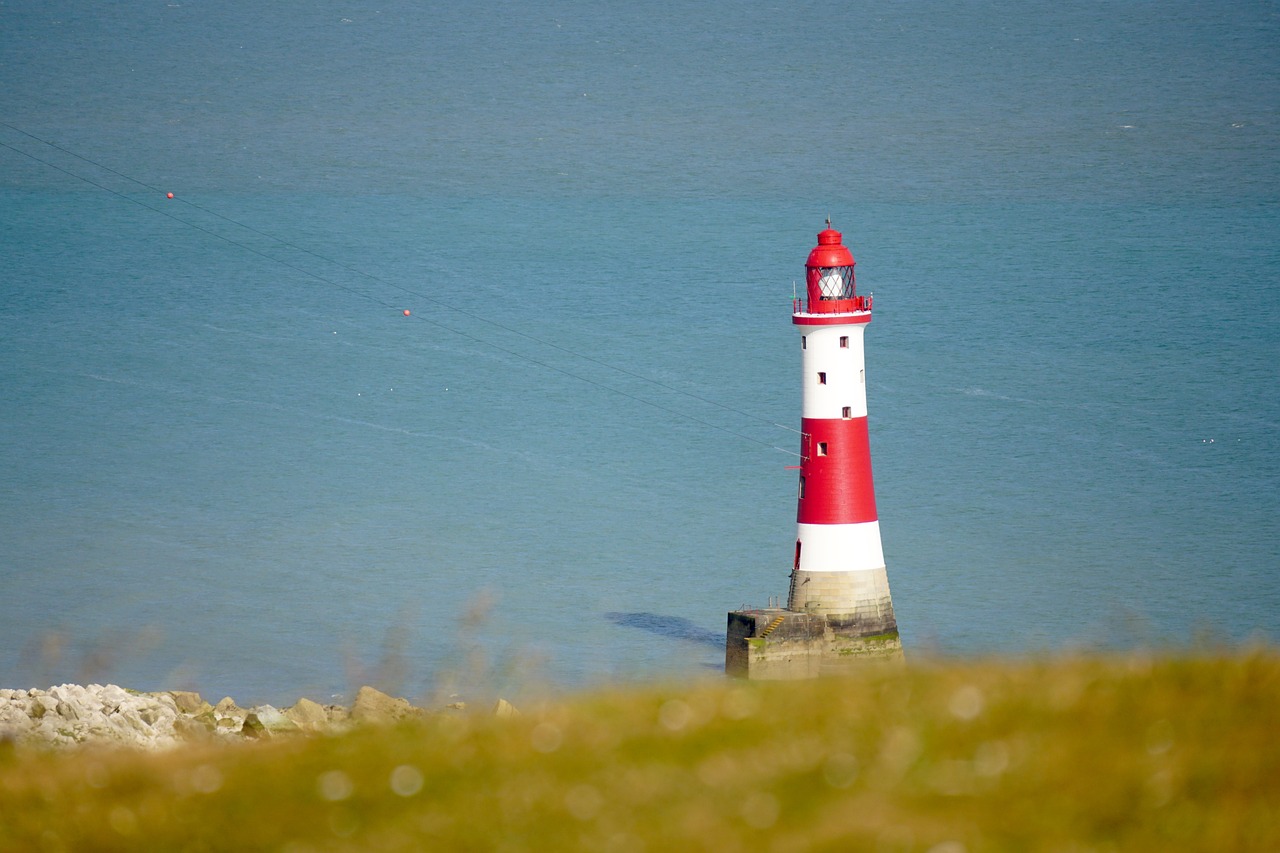
Maintaining Visibility
When it comes to backyard security, visibility is a crucial factor that is often overlooked. Imagine your backyard as a stage; if the curtains are drawn too tightly, you can't see the performance—or in this case, potential threats. Maintaining clear sightlines not only helps you keep an eye on your surroundings but also acts as a deterrent for any would-be intruders. So, how do you achieve this? The answer lies in thoughtful landscaping and regular maintenance.
First and foremost, ensure that your plants and shrubs are not obstructing key sightlines. While it’s tempting to create a lush garden, dense foliage can provide cover for unwanted visitors. Opt for low-maintenance plants that won’t grow too tall or bushy. For instance, consider using hedges or flower beds that are kept trimmed and neat. This will not only enhance the aesthetic appeal of your yard but also keep it secure.
Additionally, think about incorporating hardscaping elements like pathways or decorative stones. These can serve dual purposes: beautifying your space while ensuring that there are no hidden corners where someone could lurk undetected. Regularly check these areas to make sure they remain clear. If you have taller plants or trees, consider pruning them to maintain a level of transparency.
Another effective strategy is to install outdoor lighting in strategic locations. Well-lit areas discourage trespassers and make it easier for you to spot any unusual activity. Motion-sensor lights can be particularly effective, as they illuminate dark spots instantly, drawing your attention to any movement. Combine this with your landscaping efforts, and you’ll create a well-lit, visible space that feels safe.
Overall, maintaining visibility in your backyard is not just about aesthetics; it’s about creating a safe haven for you and your family. By taking these steps, you can ensure that your outdoor space remains both beautiful and secure, making it less appealing for intruders to invade your private sanctuary.
- How often should I trim my hedges for optimal visibility?
It’s recommended to trim your hedges at least twice a year to maintain visibility and prevent them from becoming too dense. - What types of plants should I avoid for backyard security?
Avoid tall shrubs and trees that can obstruct sightlines. Instead, opt for low-growing plants that are easy to maintain. - How can I improve lighting in my backyard?
Consider using a combination of solar-powered lights and motion sensors. Place them in darker corners and along pathways for maximum effect.

Engaging with Neighbors
Building a strong relationship with your neighbors is a cornerstone of community safety. When you engage with those living around you, you're not just fostering friendships; you're creating a network of vigilance that can significantly enhance your backyard security. Think of it as forming a safety net—each neighbor is a strand that, when woven together, creates a robust barrier against potential threats. After all, who knows better about the comings and goings in your neighborhood than the people who live right next door?
One effective way to strengthen these ties is by organizing neighborhood gatherings. These can be as simple as a weekend BBQ or a monthly coffee morning. During these informal meet-ups, you can discuss not only the joys of living in your community but also share concerns related to safety. It's a great opportunity to exchange contact information, ensuring that everyone feels comfortable reaching out if they notice anything suspicious.
Moreover, consider establishing a neighborhood watch program. This initiative is not just about keeping an eye on each other's properties; it’s about building a sense of community. When neighbors look out for one another, it fosters trust and cooperation. You might even find that some neighbors have had similar experiences or concerns, leading to a collective approach to security.
To facilitate ongoing communication, utilizing modern technology can be a game-changer. Group messaging apps like WhatsApp or platforms like Nextdoor can keep everyone informed about local happenings. You can create a dedicated group for your neighborhood where residents can share updates on suspicious activities, lost pets, or even community events. This real-time communication can alert everyone to potential issues before they escalate.
Remember, the goal is to create a community where everyone feels comfortable looking out for one another. By engaging with your neighbors, you’re not just enhancing the security of your backyard—you’re also nurturing a supportive environment where everyone can thrive. So, take that first step, strike up a conversation, and watch how a simple act of neighborly kindness can transform your sense of safety!
- How can I start a neighborhood watch program? - Begin by gathering interested neighbors and discussing the objectives. You can reach out to local law enforcement for guidance and resources.
- What are effective ways to communicate with neighbors? - Utilize group messaging apps, social media platforms, or community bulletin boards to keep everyone informed.
- Why is engaging with neighbors important for security? - A connected community is more vigilant and can respond quickly to suspicious activities, creating a safer environment for everyone.
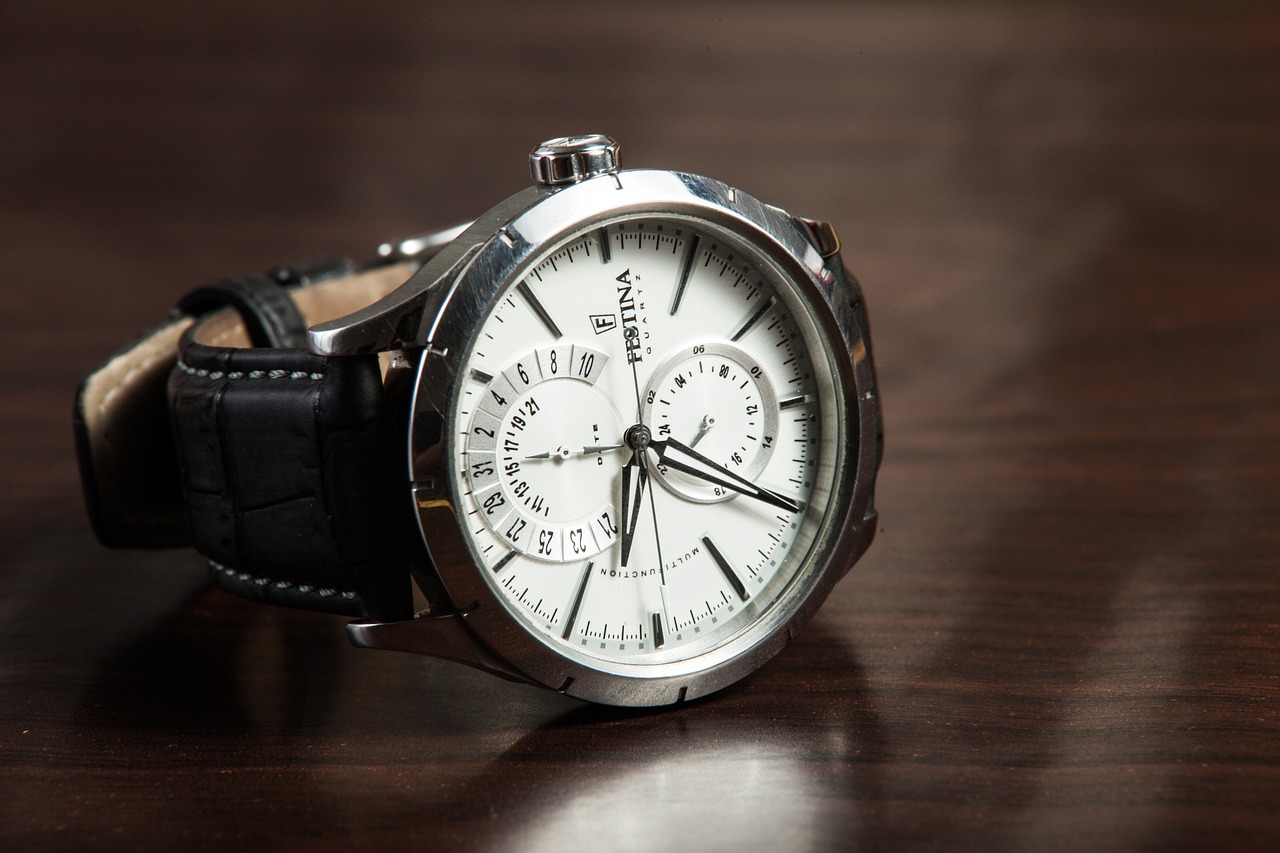
Neighborhood Watch Programs
Building a strong community is one of the most effective ways to enhance security in your neighborhood, and play a pivotal role in this effort. These programs encourage residents to be vigilant and proactive about their surroundings, fostering a sense of camaraderie and responsibility among neighbors. By working together, community members can share information about suspicious activities, report incidents promptly, and ultimately create a safer environment for everyone. Have you ever noticed something unusual in your neighborhood but hesitated to report it? With a Neighborhood Watch in place, you’ll find that you’re not alone in your concerns—many others are watching out for each other, too.
The beauty of a Neighborhood Watch Program lies in its simplicity. It typically involves residents volunteering to keep an eye on each other’s properties and report any suspicious behavior to the local authorities. This can be as straightforward as organizing regular meetings to discuss safety tips, sharing updates about local crime trends, or even establishing a communication network to alert each other about potential threats. For instance, many communities utilize social media platforms or group messaging apps to facilitate quick communication. Imagine receiving an instant message alerting you to a suspicious vehicle in the area—this kind of rapid response can make all the difference.
Moreover, Neighborhood Watch Programs can help you get to know your neighbors better. When you participate, you not only contribute to the safety of your community but also build lasting relationships. These connections can lead to a more supportive environment where everyone looks out for one another. In fact, studies have shown that neighborhoods with active watch programs experience lower crime rates. It’s a win-win situation!
To kickstart a Neighborhood Watch Program, consider the following steps:
- Gather interested neighbors and hold an initial meeting to discuss the goals and structure of the program.
- Contact local law enforcement for guidance and resources; they often provide training and materials to assist.
- Establish communication channels, such as a group chat or social media page, to facilitate information sharing.
- Plan regular meetings to keep everyone informed and engaged.
By taking these steps, you can create a robust Neighborhood Watch Program that not only enhances security but also strengthens community ties. Remember, the key is to stay involved and committed. The more engaged you are, the more effective the program will be. So, are you ready to take the plunge and make your neighborhood a safer place?
In conclusion, Neighborhood Watch Programs are a powerful tool in the fight against crime. They empower residents to take an active role in their community’s safety, fostering a spirit of collaboration and vigilance. If you haven’t already, consider starting or joining a program in your area—it might just be the best decision you make for your family's security.
Here are some common questions people have about Neighborhood Watch Programs:
- What is a Neighborhood Watch Program? - It’s a community-based initiative where residents collaborate to monitor and report suspicious activities.
- How do I start a Neighborhood Watch? - Gather interested neighbors, contact local law enforcement, and establish communication channels for reporting suspicious activities.
- Are Neighborhood Watch Programs effective? - Yes, studies show that active programs can significantly reduce crime rates in neighborhoods.
- What should we discuss in our meetings? - Share safety tips, discuss recent incidents, and plan community events to foster engagement.

Communication Tools
In today's fast-paced world, staying connected with your neighbors is more important than ever, especially when it comes to enhancing the security of your community. Utilizing effective can create a network of vigilance that helps everyone feel safer. Imagine having a digital neighborhood watch right at your fingertips! With the right tools, you can share information about suspicious activities, coordinate safety measures, and even build lasting friendships.
One of the most popular ways to keep in touch is through group messaging apps. These platforms allow you to create a dedicated space where neighbors can share updates, report incidents, or simply check in on each other. Apps like WhatsApp, Nextdoor, and Facebook Groups have become invaluable in fostering community ties. They provide a quick and easy way to disseminate information, making it possible for everyone to stay informed about local happenings.
In addition to messaging apps, consider using social media platforms to enhance your neighborhood's security. Platforms like Facebook and Twitter can serve as effective channels for sharing alerts about local crime trends or safety tips. You might even create a community page where residents can post updates and engage in discussions about neighborhood safety. This not only keeps everyone in the loop but also promotes a sense of belonging and unity.
Moreover, organizing regular community meetings can be an excellent way to strengthen ties and discuss security concerns. These gatherings can take place in a local park or community center, providing a relaxed atmosphere to share ideas and strategies for keeping your neighborhood safe. During these meetings, residents can exchange contact information, discuss emergency plans, and even brainstorm fun ways to get to know each other better.
To sum it up, the right communication tools can significantly enhance your neighborhood's security. By leveraging technology and fostering community engagement, you can create a safer environment for everyone. So, why not take the first step today? Reach out to your neighbors and explore the various communication platforms available. Together, you can build a stronger, more vigilant community!
- What are the best apps for neighborhood communication? Some popular options include WhatsApp, Nextdoor, and Facebook Groups, which allow neighbors to share information quickly and efficiently.
- How can I start a neighborhood watch program? Begin by gathering interested neighbors, discussing safety concerns, and establishing communication tools to keep everyone informed.
- What should I include in my emergency plan? Your emergency plan should outline communication protocols, a designated meeting point, and essential supplies to have on hand in case of an emergency.

Regular Maintenance and Updates
When it comes to securing your backyard, consistency is key. Regular maintenance and timely updates to your security measures ensure that your protective strategies remain effective against potential threats. Just like a car requires routine check-ups to run smoothly, your security system needs the same level of attention. By committing to a regular schedule of inspections and updates, you can not only identify vulnerabilities but also adapt to new security technologies and trends that may arise.
Start by inspecting your fencing and lighting systems. Over time, fences can become damaged due to weather conditions or wear and tear. A broken fence may provide an easy entry point for intruders. Schedule a thorough inspection at least twice a year, looking for signs of damage, decay, or instability. It’s also wise to check your lighting systems regularly. Are all your lights functioning? Are they bright enough to illuminate dark corners of your yard? A well-lit space is a deterrent for would-be intruders, so replacing burnt-out bulbs and adjusting the angle of lights can significantly enhance your security.
Furthermore, technology is ever-evolving, and staying informed about the latest advancements can give you an edge in backyard security. For instance, smart cameras are becoming increasingly popular due to their advanced features such as motion detection and remote access. If your current system is outdated, consider upgrading to a more sophisticated model that offers better surveillance capabilities. Regularly review your security technology to ensure it meets your current needs and offers the best protection possible.
Here’s a quick checklist to help you stay on top of your maintenance routine:
- Inspect fences for damage and repair as needed.
- Check lighting systems for functionality and brightness.
- Review and update security camera systems regularly.
- Stay informed about new security technologies and consider upgrades.
By keeping your security measures fresh and functional, you create a safer environment for your family and property. Don’t wait for a security breach to prompt action; be proactive, and ensure your backyard remains a secure sanctuary.
1. How often should I inspect my backyard security measures?
It's recommended to inspect your backyard security measures at least twice a year. However, if you notice any signs of wear or damage, it’s best to address them immediately.
2. What are the most effective types of lighting for backyard security?
Motion-sensor lights and solar-powered lights are highly effective. Motion-sensor lights activate when movement is detected, while solar-powered lights are energy-efficient and easy to install.
3. Do I need to upgrade my security cameras regularly?
While it’s not necessary to upgrade your cameras frequently, staying informed about new technology can help you decide when an upgrade is warranted for better security features.
4. How can I create a natural barrier for added security?
Using dense, thorny, or prickly plants can create a natural barrier. Ensure that these plants do not obstruct visibility, allowing you to keep an eye on your surroundings.
5. What should I include in my emergency kit?
Your emergency kit should include essential supplies such as first aid items, flashlights, batteries, and communication tools to ensure you are prepared for any situation.

Inspecting Fencing and Lighting
Regular inspections of your fencing and lighting are crucial for maintaining a secure backyard environment. Think of your backyard security as a well-oiled machine; if one part is rusty or broken, the entire system can falter. Start by walking around your property and visually checking your fence for any signs of wear and tear, such as broken panels, loose posts, or rust spots if you have metal fencing. These vulnerabilities can be an open invitation for intruders, so addressing them promptly is essential.
Next, don’t forget to inspect your lighting. Proper lighting is your first line of defense against unwanted visitors after dark. Ensure that all lights are functioning correctly and that there are no burnt-out bulbs. A good tip is to create a simple checklist to keep track of your inspections:
- Fencing: Check for broken panels, loose posts, and rust.
- Lighting: Test all bulbs, ensure motion sensors are working, and clean any dirt or debris from fixtures.
- Landscaping: Trim bushes or trees that may obstruct light or visibility.
Additionally, consider the placement of your lights. Are they illuminating key areas like entry points and dark corners? If not, it might be time to reposition them or add new fixtures. Remember, a well-lit backyard not only deters intruders but also provides peace of mind for you and your family.
In summary, a proactive approach to inspecting your fencing and lighting can significantly enhance your backyard security. Regular maintenance not only prevents potential issues but also keeps your outdoor space looking great. So, grab that checklist, take a walk around your property, and ensure that your backyard remains a safe haven for your loved ones.
Q: How often should I inspect my fencing and lighting?
A: It's advisable to conduct inspections at least twice a year or after severe weather events to catch any potential issues early.
Q: What should I do if I find damage to my fence?
A: Depending on the extent of the damage, you can either repair it yourself or hire a professional. Regular maintenance can help avoid costly repairs in the future.
Q: Are solar lights effective for security?
A: Yes, solar lights can be very effective, especially when strategically placed. They are energy-efficient and can illuminate pathways and entry points without the need for wiring.
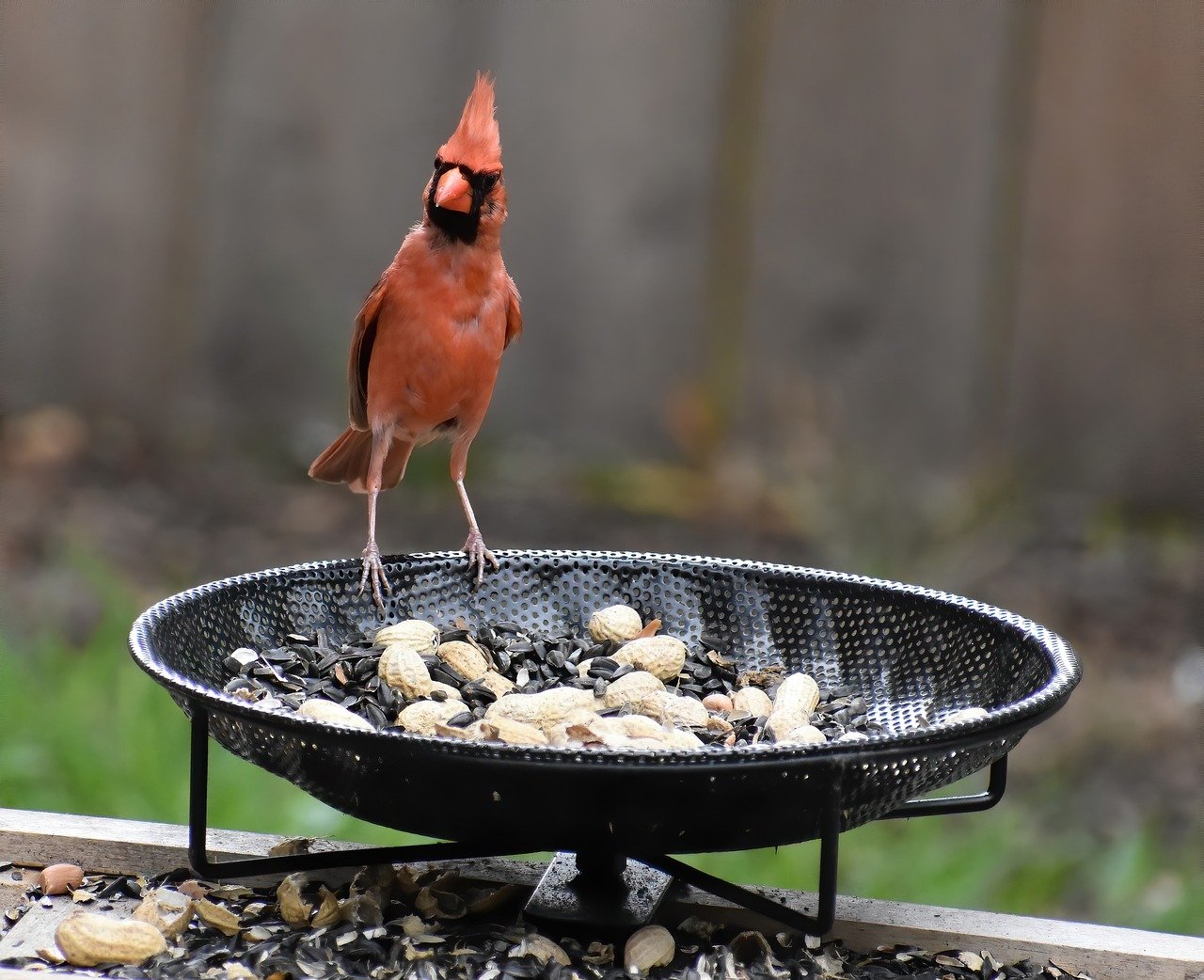
Updating Technology
In today's fast-paced world, staying updated with the latest technology is not just a luxury; it's a necessity, especially when it comes to securing your backyard. As technology evolves, so do the methods used by intruders. By upgrading your security systems, you can stay one step ahead and ensure that your home remains a safe haven for you and your family. So, what should you focus on when considering technology upgrades? Let's dive into the essentials!
First and foremost, consider enhancing your security cameras. The market is flooded with options, from basic models to advanced smart cameras equipped with features like night vision, two-way audio, and cloud storage. These upgrades not only improve your surveillance capabilities but also give you peace of mind knowing that you can monitor your property from anywhere via your smartphone. Imagine being on vacation and receiving an alert about movement in your backyard; with the right technology, you can check in instantly!
Next, think about integrating smart home technology into your security system. Smart locks, for instance, allow you to control access to your home remotely. You can lock or unlock your doors from your phone, making it easier to manage who enters your space. Pair this with smart lighting that can be programmed to turn on and off at specific times, and you create an illusion of occupancy, which is a strong deterrent against potential intruders.
Moreover, consider investing in a comprehensive home security system that includes alarms, motion detectors, and door/window sensors. These systems can be monitored in real-time, alerting you and local authorities immediately in case of a breach. When selecting a system, look for features like:
- Remote Monitoring: Keep an eye on your property from anywhere.
- Mobile Alerts: Receive notifications directly to your phone.
- Integration with Other Smart Devices: Create a cohesive security network.
Lastly, don't forget about software updates. Just like your smartphone or computer, security devices require regular updates to function optimally. Manufacturers often release updates that patch vulnerabilities and improve performance. Regularly check for updates on your devices and install them promptly to keep your security system robust.
By embracing these technological advancements, you're not just enhancing your backyard security; you're also investing in the safety and well-being of your loved ones. Remember, a secure home is a happy home, and staying updated with the latest technology is a significant step in achieving that peace of mind.
- What is the best type of security camera for my backyard?
The best type depends on your specific needs. Consider features like resolution, night vision, and whether you want wired or wireless options.
- How often should I update my security technology?
It's advisable to review your security technology annually and update any devices that are outdated or no longer effective.
- Can I integrate smart technology with my existing security system?
Many modern security systems are designed to be compatible with smart home devices, allowing for seamless integration.

Emergency Preparedness
When it comes to securing your backyard, one of the most critical aspects is . It's not just about installing fences or cameras; it's about having a comprehensive plan that ensures your family's safety in unexpected situations. Imagine a scenario where an intruder attempts to breach your property. What would your family do? Would they know how to react? Having a plan in place can make all the difference between chaos and calm.
To start, it's essential to assemble an emergency kit. This kit should contain all the necessary supplies that you might need in a crisis. Think of it as your family's safety toolbox. Here's what you should include:
- First aid supplies: Bandages, antiseptics, and any necessary medications.
- Flashlights: Ensure they're functional and have extra batteries.
- Communication tools: A whistle or a portable charger for your phones can be invaluable.
Next, establish clear communication plans within your family. Designate a meeting point where everyone can gather in case of an emergency. This could be a neighbor's house or a specific spot in your backyard. Make sure everyone knows how to get there and what to do if they can't find each other. Additionally, consider using a group messaging app to keep everyone informed and updated about any security threats or emergencies.
Regularly review and practice your emergency procedures. Just like fire drills in schools, rehearsing your emergency plan can help everyone feel more confident and prepared. You might even want to set up a family meeting to discuss roles and responsibilities during an emergency. This way, everyone knows their part, and you can avoid confusion when it matters most.
Finally, staying informed about local crime rates and security trends can significantly enhance your preparedness. Subscribe to local community alerts or join neighborhood watch programs. This not only builds a sense of community but also keeps you updated on potential threats in your area. Remember, an informed family is a safe family!
| Question | Answer |
|---|---|
| What should I include in my emergency kit? | Your emergency kit should include first aid supplies, flashlights, batteries, and communication tools. |
| How can I ensure my family knows the emergency plan? | Hold regular family meetings to discuss the plan and rehearse it so everyone understands their roles. |
| Why is it important to have a designated meeting point? | A designated meeting point ensures that all family members know where to go in case of an emergency, reducing confusion. |

Creating an Emergency Kit
When it comes to ensuring the safety of your family, having an emergency kit is an absolute must. Think of it as your personal safety net, ready to catch you in times of need. An emergency kit can be a lifesaver during unexpected situations, whether it’s a natural disaster, a home invasion, or any other security breach. But what exactly should you include in this essential kit? Let’s break it down.
Your emergency kit should be tailored to your specific needs, but there are some key items that everyone should consider. First and foremost, you’ll want to include first aid supplies. Imagine being in a situation where someone gets injured, and you have no means to help them. A well-stocked first aid kit can make all the difference. In addition to bandages and antiseptics, consider adding items like pain relievers and allergy medications.
Next, you should think about communication tools. In the chaos of an emergency, staying connected can be challenging. Having a battery-powered or hand-crank emergency radio can keep you informed about local news and alerts. Additionally, including a portable charger for your mobile devices ensures that you can reach out for help or stay in touch with loved ones.
Another critical component is lighting. Power outages are common during emergencies, so having a reliable flashlight or lantern can provide much-needed illumination. Don't forget to pack extra batteries, as they can be a lifesaver when the lights go out. You might also want to consider including glow sticks or candles as alternative light sources.
Water and non-perishable food are also essential. Aim for at least one gallon of water per person per day, and consider including items like energy bars, canned goods, or dried fruits. These supplies can help sustain you and your family until help arrives or until you can safely leave your home.
Lastly, it’s wise to have a plan for your pets. If you have furry family members, don’t forget to include their essentials in your emergency kit. Pack food, water, and any medications they might need. This way, you can ensure that your pets are safe and sound during a crisis.
To summarize, here’s a quick checklist of items you should consider for your emergency kit:
- First Aid Supplies
- Communication Tools (radio, portable charger)
- Lighting (flashlight, extra batteries)
- Water and Non-Perishable Food
- Pet Supplies (food, water, medications)
Creating an emergency kit is not just about gathering supplies; it’s about preparing your family for the unexpected. By taking the time to assemble a comprehensive kit, you’re not only protecting your loved ones but also instilling a sense of security and readiness in your home. Remember, it’s better to have it and not need it than to need it and not have it!
Q: How often should I check my emergency kit?
A: It's a good practice to check your emergency kit at least once every six months. This ensures that all items are in good condition and that any food or medications haven’t expired.
Q: Where should I store my emergency kit?
A: Store your emergency kit in a cool, dry place that is easily accessible. Make sure all family members know where it is located.
Q: How can I involve my family in preparing the emergency kit?
A: Involve your family by discussing what items to include and assigning tasks for gathering supplies. This not only makes the process fun but also educates everyone on the importance of being prepared.

Establishing Communication Plans
When it comes to ensuring the safety of your family in the event of an emergency, having a well-thought-out communication plan is essential. Think of it as your family's safety net, ready to catch you when things go awry. First and foremost, you need to establish a designated meeting point—somewhere everyone knows to go if they need to regroup. This could be a tree in your backyard, a neighbor’s porch, or even a local park. The key is that it should be a place that is easily accessible and recognizable to all family members.
Next, it’s crucial to create a list of important contacts. This list should include not just immediate family members, but also trusted friends, neighbors, and local emergency services. Make sure everyone in the family has a copy of this list, and consider storing it in an easily accessible spot, like on the fridge or in a family planner. In addition to phone numbers, it’s wise to include alternate ways to communicate, such as social media or messaging apps, especially if phone lines are down.
In today’s digital age, technology can be your best friend when it comes to communication. Utilizing group messaging apps can facilitate quick updates among family members. For example, apps like WhatsApp or GroupMe allow you to create a dedicated group where everyone can share real-time information. This can be particularly useful during emergencies, where every second counts. Additionally, discuss with your family how to use these tools effectively, ensuring that everyone is on the same page.
Lastly, regular drills are a fantastic way to keep the communication plan fresh in everyone’s mind. Just like fire drills at school, practicing your emergency communication plan can help reinforce its importance. Gather your family and run through the scenarios: What happens if there’s a break-in? How will you communicate if someone is at school or work? These practice sessions not only build confidence but also highlight any gaps in your plan that may need addressing.
In summary, establishing a communication plan is not just about having a set of instructions; it’s about fostering a sense of security and preparedness within your family. By designating meeting points, sharing important contacts, utilizing technology, and conducting regular drills, you can help ensure that everyone knows what to do when it matters most.
- What should I include in my emergency communication plan?
Include designated meeting points, important contact numbers, and alternative communication methods. - How often should we practice our emergency plan?
Regularly practicing your plan, at least once every few months, helps keep it fresh in everyone's mind. - What if our phones are not working during an emergency?
Have alternative communication methods in place, such as using social media or finding a landline nearby.
Frequently Asked Questions
- What are the best types of fencing for backyard security?
When it comes to enhancing your backyard security, the best types of fencing include wood, metal, and vinyl. Wood fences provide a classic look and can be customized for height, while metal fences, like wrought iron or aluminum, offer durability and strength. Vinyl fencing is low-maintenance and can also provide good security.
- How can lighting improve backyard security?
Proper lighting is crucial for deterring intruders. By installing motion-sensor lights, you can ensure that any movement triggers illumination, making it harder for intruders to go unnoticed. Additionally, solar-powered lights are an energy-efficient option to brighten up dark areas, enhancing visibility and safety.
- Are security cameras worth the investment?
Absolutely! Security cameras provide peace of mind and allow you to monitor your backyard effectively. With options like wired, wireless, and smart cameras, you can choose what fits your needs best. Smart cameras come with advanced features such as motion detection and remote access, making them a smart choice for modern security.
- What natural barriers can I use to enhance security?
Utilizing landscaping to create natural barriers is a great strategy. Dense shrubs, thorny plants, and strategically placed trees can deter intruders while adding beauty to your backyard. Just make sure to maintain visibility by keeping plants trimmed and well-maintained.
- How can I engage with my neighbors for better security?
Building relationships with your neighbors can significantly enhance your security. Participating in or starting a neighborhood watch program fosters a sense of community. Additionally, utilizing group messaging apps can help keep everyone informed about local security issues and suspicious activities.
- What should I include in my emergency kit?
Your emergency kit should include essential supplies like first aid items, flashlights, batteries, and communication tools. It's also wise to have a list of emergency contacts and a plan for how your family will communicate and meet in case of an emergency.
- How often should I check my security measures?
Regular maintenance is key to effective security. It's advisable to inspect your fencing and lighting at least twice a year to identify any issues early. Staying informed about the latest security technologies and updating your systems as needed will also keep your backyard secure.



















